

Ross Island and Mount Erebus Antarctic Regions - Maps and Pictures
Regional maps of antarctica with photographs of the area., geography - map skills.
Teacher file, maps + worksheet + answers word document | pdf document A high resolution zoomable map of Antarctica here Another zoomable Antarctic map, not quite so high resolution but more visible features here
An entirely volcanic island in the Ross Sea off the coast of Antarctica in McMurdo Sound at 77°30'S 168°00'E, Ross Island is made up of four volcanoes including Mount Erebus, the worlds most southerly active volcano 3,794m (12,448ft) high and one of a very few worldwide with a permanent lava lake in the crater. Ross Island gives the impression of being part of the mainland as there is a permanent ice connection to the Ross Ice Shelf along the southern edge.
Ross Island was discovered by Sir James Clark Ross in 1841 and was thought to be part of the mainland. It was found to be an island by the British National Antarctic Expedition in 1901-04 and named for Ross by Captain Scott. Mount Erebus was named by Ross for his ship. The extinct volcano Mount Terror on Ross Island was named for Ross's other ship on his expedition at the time.

Ross Island has played a large role in the history and exploration of Antarctica. It has three historic huts that were built and used by the explorers Scott and Shackleton in the Heroic Age of Antarctic Exploration from 1898 to 1922.
There are two currently active scientific stations at the end of the Hut Point Peninsula, the American McMurdo Station which was established in 1956 and the New Zealand Scott Base established in 1957.

An ice tongue forms where a valley glacier moves quickly out to sea, the ice is freshwater ice fed in this case by accumulated snow from the slopes of Mount Erebus which floats when it meets the sea.

Source of the Maps
Antarctic REMA Explorer.
Antarctic Digital Database Map Viewer - License terms and conditions - Data is licensed according to Creative Commons CC-BY - data is free to use, modify and redistribute provided the source "SCAR Antarctic Digital Database" is acknowledged, and that the disclaimer below is accepted. Disclaimer - Information in the Antarctic Digital Database has been obtained from sources believed to be reliable but its accuracy and completeness, and the validity of the opinions based thereon, are not guaranteed. As every effort has been made to provide accurate information in this database, SCAR would appreciate it if users could indicate in writing any errors that may be noticed. SCAR is not inviting reliance on these data, and the user should always check original published data. The information in this database is subject to change. Questions about the data should be addressed to Adrian Fox https://add.data.bas.ac.uk/repository/entry/show?entryid=f477219b-9121-44d6-afa6-d8552762dc45
Picture credits: Erebus crater by Nick Powell - NSF / Erebus Ice Tongue by Mike Lucibella - NSF / Scott's Hut and Erebus from sea ice by Alan Light / Ferrar Glacier- Elaine-Hood - NSF.

- Antarctic Circle
- Antarctica Facts
- Antarctica from Australia and New Zealand
- South Georgia
- Falkland Islands
- Canadian Arctic
- Russian Arctic and North Pole
- Spitsbergen
- Belize & Guatemala
- Honduras & Nicaragua
- Panama & Costa Rica
- Machu Picchu
- Pantanal & Wetlands
- Photography
- Travel Tips
- Wine and Dine
- Sustainable Travel

East Antarctica and the Ross Sea Travel Guide
Antarctica Antarctica from Australia and New Zealand Travel Tips Wildlife
Renowned for being the longest and most intense expeditions of all, journeys to East Antarctica and the Ross Sea depart from Australia and New Zealand just a handful of times, every southern summer.
These hard-core odysseys explore the least visited, wildest and historically significant region of the White Continent, retracing the steps of famed explorers like Robert Falcon Scott. Scott tackled this formidable route on his awe-inspiring yet ill-fated Terra Nova Expedition in 1912.
Enormous icebergs, large congregations of whales and seals, some of the largest colonies of penguins in the world and more sea birds than you could ever admire: these are just some of the astonishing highlights that entice visitors to this lesser-visited side of Antarctica. Coupled with visits to a handful of revered historical sites dating back to the historic age of polar explorations, remote scientific research stations and some of the most isolated islands on earth, brimming with untold numbers of unique wildlife, these epic voyages are well and truly life-changing experiences.
Why East Antarctica & the Ross Sea?
The Ross Sea is often dubbed the last true pristine marine ecosystem left on earth and, rather conveniently, is the gateway to East Antarctica. The marine-life enrichment of this stretch of Southern Ocean, which extends from Ross Island in the west to the Marie Byrd Land on the east, is what attracts an abundance of unique marine life. Over 100 species of fish thrive in the Ross Sea, as well as a dozen unique species of sea birds and countless marine mammals like orcas, minke, killer whales, leopard seals and Weddell seals . Minkes alone can number in their thousands and Adélie penguins , the most abundant of their species in this region, number in their millions.
More amazing still is the chance to see emperor penguins , the magnificent beast and largest of its kind is by far the most elusive wildlife to spot on classic Antarctic expeditions. Emperors live deep within the Antarctic Circle, closer to the South Pole, so expeditions to East Antarctica and the Ross Sea offer the highest chances of a spotting.
Then there is the small matter of absolutely mind-blowing landscapes . East Antarctica is the land of snow-capped volcanoes, eye-popping icebergs, endless sheets of ice and even arid deserts that resemble outer space.
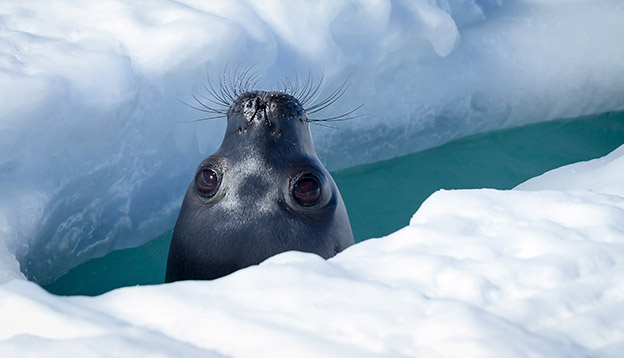
Highlights of East Antarctica and Ross Sea expeditions
Emperor penguins.
Among an incredible abundance of marine life, the coastline of East Antarctica sees a congregation of emperor penguins during the southern summer and this is undoubtedly one of the biggest enticements for those choosing to undertake this truly epic journey.

The most elusive and awe-inspiring member of the penguin world is an anomaly in every respect. Whilst other Antarctic penguin species travel north away from the White Continent as winter approaches, the Emperor heads south, right into the heart of it. They breed and nest in winter, the coldest time of year, in the coldest place on earth. They are the only wildlife species that reside in Antarctica, all year long, with males famously huddling with their precious eggs for months on end in the dead of winter, whilst females set off to feed. The communal huddle braces winds of up to 200km/hr and temperatures that plummet to -50C. By the end of the Antarctic winter, the male Emperor will have lost almost half their body weight.
The Emperor penguin winter huddle is, by all accounts, one of the most magnificent spectacles of nature on our planet; not that many have ever had the privilege of witnessing it.
Emperor penguins remain a very special and elusive sight yet chances you will spot them in East Antarctica are infinitely greater than if you were to travel anywhere else in the region.
Crossing of the Southern Ocean
Expeditions from Australia and New Zealand enjoy the most sailing days of any Antarctic journey. Whilst it would take you just two days to reach the western side of the peninsula from Ushuaia, you can look forward to a whole week of exquisite sea crossing: first the Tasman and then the Southern, all the way past the magical line of the Antarctic Circle. On your weeklong crossing, you’ll not only be privy to exceptional lectures and presentations on the history, wilderness and wildlife of East Antarctica but you’ll also have the chance to enjoy the many services offered aboard your ice-strengthened vessel.
At the height of the summer, with long sunny days, whale-watching from the deck is at its absolute best – least of all because East Antarctica expeditions cast off towards the end of the cruising season, where whale numbers reach their peak.
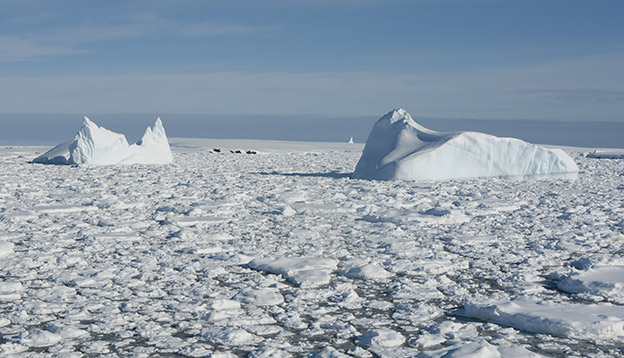
Visiting Historic Huts in East Antarctica
Many of the most famous moments in Antarctic exploration history took place in East Antarctica and visiting the remnants from the heroic age of polar exploration is a highlight of East Antarctica expeditions. Several of the huts built by early Antarctic explorers, such as Scott, Shackleton, and Mawson stand today as frozen time capsules to this famous era of exploration.
Shackleton’s Hut
Situated at Cape Royds, Shackleton’s Hut was the base for the British Antarctic (Nimrod) Expedition 1907–1909. Shackleton’s hut is protected by the New Zealand Antarctic Heritage Trust and has been carefully restored to its original condition.
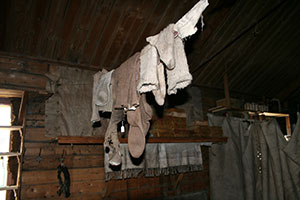
Scott’s Hut
Located at Cape Evans on Ross Island, Scott’s hut was originally erected in 1911 during Scott’s second Antarctic expedition, the British Antarctic Expedition of 1910–1913. Scott’s hut was the base for Scott’s famous and fatal attempt to reach the South Pole. Scott’s hut lay untouched for many years. When it was eventually dug out from the snow it was found to be in remarkable condition.

Mawson’s Huts
Situated at Cape Denison, East Antarctica, Mawson’s Huts are carefully protected and conserved by the Mawson’s Huts Foundation in partnership with the Australian Antarctic Division. These huts were erected by the 1911-1914 Australasian Antarctic Expedition, led by Sir Douglas Mawson. Mawson’s Huts are considered the birthplace of Australia’s Antarctic Heritage. Situated on Antarctica’s most windswept coastline, very few people have had the privilege of visiting Mawson’s Huts. As such, an expedition to this incredible piece of Australian history is a truly unique experience.
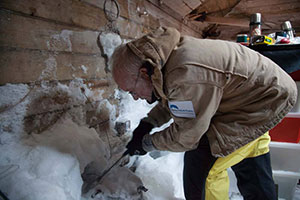
Campbell Island
An uninhabited sub-Antarctic island chain under Kiwi administration, Campbell is a UNESCO-listed treasure revered as the most prominent breeding spot for the southern royal albatross (the second-largest of its species) and four other albatross species, as well as three distinct penguin species, including the yellow-eyed penguin – a native of New Zealand. The local sea lion, fur and elephant seal populations have made a great recovery here since the long-gone history of hunting and fishing, making this one of New Zealand’s most marine-life enriched Sub-Antarctic islands.
Although inhabited at various times in history (particularly during the seal and whale-hunting boom of the 1800s), the island now hosts a meteorological centre and, aside from visits by the Royal New Zealand Navy, is only visited by a couple of Antarctic expedition ships, every year. Not every East Antarctica and Ross Sea expedition stop by Campbell Island yet, those that do, love the fact that being so close to Bluff (700km) means they make landfall on day 3 of their long expedition. As Antarctica expedition crews love to say: more people have climbed Everest than have ever visited these long-hidden islands – a visit is an unforgettable highlight on your way south.

Balleny Islands
This trio of volcanic and highly glaciated islands could either be your first or second attempted landfall on East Antarctica and Ross Sea expedition, depending on your chosen itinerary. British sealing captain John Balleny first spotted the isles in 1839 and, when he made landfall, became the first person to do so beyond the Antarctic Circle.
The world, as it were, is altogether different this close to East Antarctica and although the islands have been notoriously difficult to explore, the situation is getting easier every year, with extensive ice-melt allowing at least a few zodiac landings in recent years. Part of the Ross Sea marine-life hot-spot , the islands are renowned for attracting humpback whales, in particular, and for their extraordinary landscapes of ice-capped peaks and abundance of at least three seal species and countless migrating birds. Cruising alongside the coats of the Balleny Islands is an experience that’s simply out of this world.
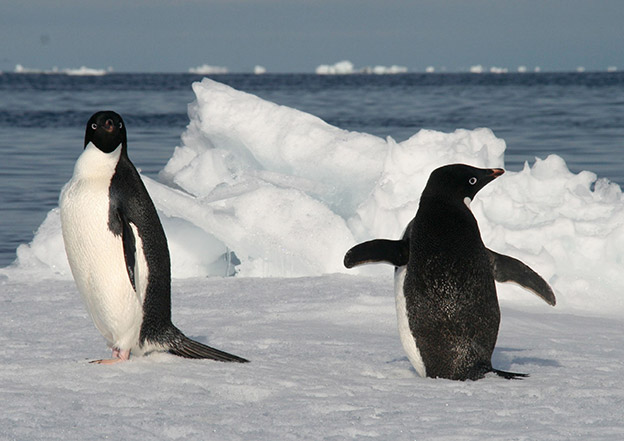
Auckland Islands
The Auckland Islands, like many Sub-Antarctic islands, is home to a plethora of fascinating wildlife species. The New Zealand (Hooker) sea lion (the world’s rarest sea lion) resides throughout the islands. Several species of albatross, including the royal albatross, live here, as well as yellow-eyed and rockhopper penguins.
The Auckland Islands are renowned for having the most diverse plant life of all the sub-Antarctic Islands with 202 native species. Summertime on the islands sees them come alive with colour when many of the islands’ mega herbs flower.
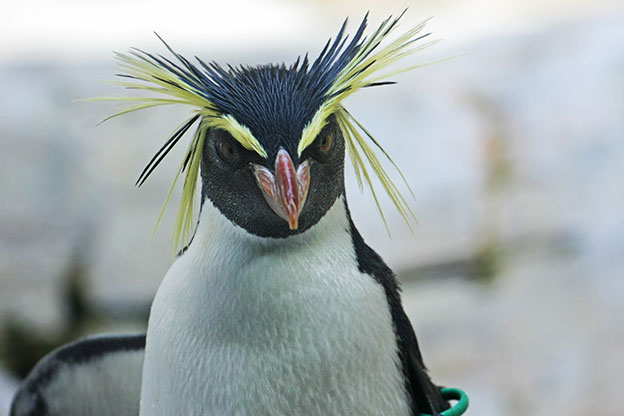
Alongside the Auckland Islands, the Snares are part of New Zealand’s Sub-Antarctic territory. The name “Snares” is due to its hazardous reputation for ships. Located in relative proximity to New Zealand, the Snares have a reasonably temperate climate. They are home to an astonishing approximately 5 million birds – considered quite likely the highest density of bird life in the world.
Bird species include sooty shearwaters, Buller’s albatross, diving petrels, giant petrels, terns, skuas, and gulls. The endemic Snares crested penguin also reside here, as do colonies of New Zealand sea lions and fur seals.
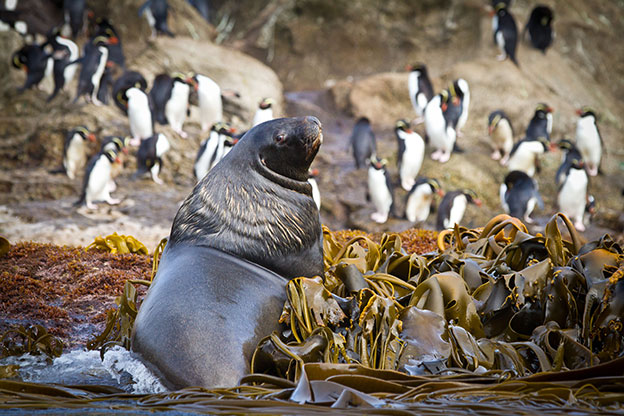
Home to Antarctica’s oldest buildings, Cape Adare is an absolute highlight for history buffs. This was the site of the first-ever winter layover in Antarctica’s history and the remains of the hut used by explorer Carsten Borchgrevnik, the Norwegian leader of the 1898 British Antarctic Expedition still stand strong today. Borchgrevnik is perhaps the least-known of the Antarctic explorers yet his achievements were nothing short of impressive. These are the oldest huts in all of Antarctica and one of four left in East Antarctica. The main hut is in surprisingly great condition, in contrast to those built by Captain James Clarke Scott during his own winter expedition here in 1911 – there’s almost no trace of those left at all.
The cape, first discovered by Scott in 1841, is a seemingly inhospitable place, even if visiting aboard a world-class 21 st -century vessel in the heart of summer. Framed by dark volcanic cliffs that form the northern end of the Transantarctic Mountains, the pebble beach leading to the historic huts is also enticing for another reason: this spot is home to arguably the largest colony of Adélie penguins in Antarctica.
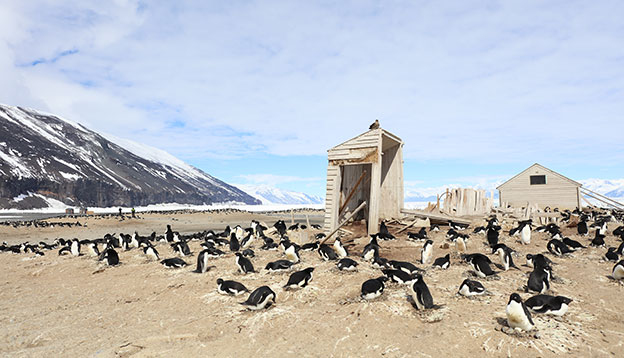
Terra Nova Bay
If the weather gods continue to be in your favour, you can also make landfall at Terra Nova Bay, a spectacular inlet along the coast of Victoria Land in East Antarctica. Nestled between mighty glaciers and impenetrable icy mountains, the bay is home to an Italian scientific research station, Zucchelli, whose crew is always overwhelmingly happy to receive cruise ship visitors. The station studies the bay’s exceptional biodiversity and sightings of more Adélies as well as emperor and Weddell seals are not uncommon.
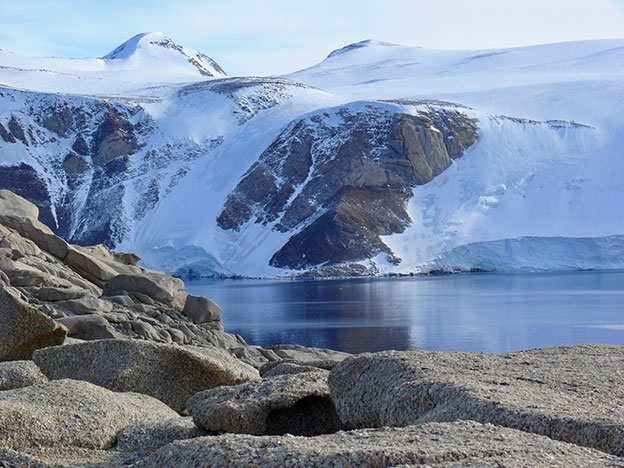
Ross Ice Shelf
The largest body of floating ice on our planet is one of the most flabbergasting highlights of East Antarctica. Only 10% of the shelf may be above sea level yet it still manages to leave everyone who sees it absolutely spellbound. The sheer ice cliff extends up to 50 metres in the air and stretches for more than 600km.
Aside from the Ross Ice Shelf being an imposing spectacle of its own accord, there are also huge wildlife and iceberg-spotting opportunities, making this one of the most exciting destinations of your entire journey.
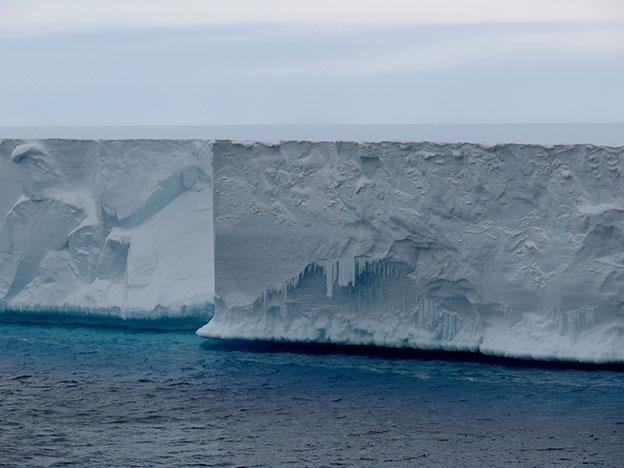
Ross Island
Home to the largest scientific station in the continent, McMurdo , as well as the historic Discovery Hut built by Robert Falcon Scott during his 1901-04 expedition, Ross Island is, thanks to extensive ice formation, essentially part of the East Antarctic mainland. Formed by four volcanoes, the most famous being Mt Erebus (the second-highest and southernmost active peak on earth)
McMurdo Station is the remotest corner of East Antarctica you can reach by expedition ship and a mighty fine place to go for a drink. Inhabited year-round and boasting an impressive array of services befitting its small-town status, the station is an ethereal and fascinating place to visit. Just a few hundred metres from this base is where you’ll find Discovery Hut, which was a pre-fab structure originally built in Sydney and carried to the southern end of the world by Scott during his Discovery Expedition and later used by Shackleton in 1908 during his Nimrod Expedition.
Marine life visits the coastlines of Ross Island (the island supports half a million Adélie penguins, among other species) and many East Antarctica expedition ships will spend at least two days docked here in order to explore and cruise by Zodiacs.
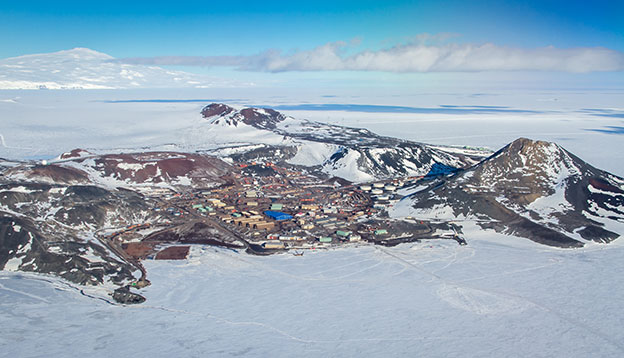
McMurdo Dry Valleys
Perhaps the most ethereal site to visit on this usually blinding-white paradise, the Dry Valleys of McMurdo are unusually snow-free for the great part, which makes for fantastic explorations on foot. This is the continent’s least icy terrain, maintained so thanks to strong katabatic wins which keep snow from accumulating. It is also more Mars-like than any other place on earth, boasting the kind of conditions that barely make life possible: high salt, extreme cold and wind. For these reasons, the McMurdo Dry Valleys are considered the most extreme deserts on our planet.
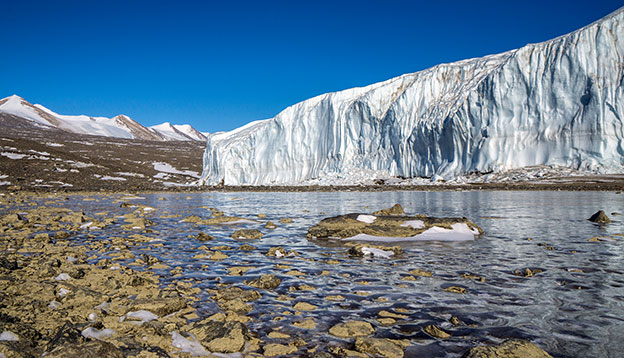
The infamous unpredictability of Antarctica means that no two expeditions are ever the same and that, when all is said and done, all landings really are at the mercy of the weather. The upside of East Antarctica and Ross Sea expeditions, however, is that their longer schedules allow for more itinerary manoeuvring and even backtracking in some instances in order to visit a highly coveted destination.
Moreover, do note that the above is just a taste of the many landing sites and options available in eastern Antarctica. If rough sailing conditions, bad weather or extensive ice blocks one landing spot, trust your experienced Captain to find another, all the while preserving your safety and well-being.
Best way to travel to East Antarctica and the Ross Sea
East Antarctica and Ross Sea expeditions cast off from Australia and New Zealand in January and February , aboard some of the hardiest expedition ships ever built. Itineraries range from 23 to 33 days, with longer routes including more of those amazing sub-Antarctic islands and extra landfall days on the East Antarctic mainland.
You will undoubtedly notice that these are some of the most expensive Antarctica expeditions on offer but, when put in context in terms of expedition days, certainly deliver the best value-for-money Antarctic experience of all.
Learn all there is to know about this incredible place from our comprehensive Antarctica Travel Guide and when you’re ready to take the next step, contact us for more personalised advice.

Things to Do in Ross Island, Antarctica - Ross Island Attractions
Things to do in ross island.
- Good for Kids
- Good for Big Groups
- Adventurous
- Budget-friendly
- Good for a Rainy Day
- Hidden Gems
- Good for Couples
- Honeymoon spot
- Good for Adrenaline Seekers
- Things to do ranked using Tripadvisor data including reviews, ratings, photos, and popularity.
1. Mount Erebus
2. air new zealand flight 901 memorial cross.
Scott & Shackleton's Antarctica - Ross Sea Expedition
- Get inspired by the possibilities.
- Build your ideal trip.
- Spot Antarctic wildlife such as whales, seals, and penguins.
- Explore the unique flora and fauna of New Zealand's Sub-Antarctic islands.
- Cruise the Ross Sea and follow in the footsteps of legendary explorers.
- Marvel at pristine landscapes, massive glaciers, and sculptural icebergs.
- Small Ship Cruises
- Wildlife Viewing
- New Zealand
- South Pacific
- Campbell Island
- Macquarie Island
- Ross Island
Full Itinerary
Day 1: dunedin | embark, day 2: at sea.
- 1 Breakfast, 1 Lunch, 1 Dinner
Day 3: Campbell Island
Day 4-6: at sea.
- 3 Breakfasts, 3 Lunches, 3 Dinners
Day 7-14: Ross Sea Region
- 8 Breakfasts, 8 Lunches, 8 Dinners
Day 15: At Sea
Day 16: balleny islands, day 17-18: at sea.
- 2 Breakfasts, 2 Lunches, 2 Dinners
Day 19: Macquarie Island
Day 20: at sea, day 21: the snares, day 22: dunedin | disembark.
- 1 Breakfast
Dates & Prices
My preferred start date.
Initial deposit is 30%, and most travelers will call our office and pay the deposit with a credit card.
Final payment is due 100 days prior to departure by Visa, Mastercard, Discover or AmEx. All final payments by credit card may be subject to a surcharge and maximum of $20,000 charge
See our general terms and conditions:
- Adventure Life Terms & Conditions
We are an agent for one or more providers on this trip with specific cancellation policies and terms:
- Ponant Special Terms & Condition - Ponant
For full cancellation policy details, please contact us for a quote.
- 21 Breakfasts, 20 Lunches, 21 Dinners
- 21 Nights Accommodations
- Accommodations as listed
- Ground transportation as listed
- Activities as listed
- Meals as listed
- Access to a 24-7 Emergency line while traveling
- Unlimited Wifi
- Onboard Entertainment
- Captain’s Welcome Cocktail and Gala Dinner
- Gratuities to Onboard Crew
- “Open Bar” (pouring wines, house champagne, alcohol except premium brands...list available upon request)
- 24h Room Service (special selection)
- English-Speaking Lecturer
- Highly experienced and bilingual (French-English) expedition staff
- Park Entry Fees into Protected Areas
- Water sports activities (except scuba diving) using the ship’s equipment, when permitted by local authorities and confirmed by ship Master according to safety and sea conditions onsite.
- Use of rubber boots for landings, and a polar parka
- Travel Insurance
- Personal Expenses
- Flight costs (please request a quote)
- Fuel and transportation surcharges (when applicable)
- Optional Excursions - Ponant allows you to pre-book your excursions approximately six to two months prior to the cruise* departure. Please note that this is subject to change. Please contact us for more details.
- Any ground services before and/or after the cruise other than the ones mentioned
- Luggage Handling
- Laundry Services, Hair Salon, and à La Carte Spa Treatments
- Pre or post cruise programs, overland programs or shore excursions
- Beverages other than the ones mentioned in inclusions
- CDP recommends that every Traveler has full and adequate travel insurance covering the risks of cancellation, assistance being required, repatriation, damages to and loss of baggage, and medical expenses
We Love to Talk Travel
Antarctica travel guide.
- All Antarctica Trips
- Antarctica Luxury Cruises
- Best Time of Year to Travel to Antarctica
- Comparing the Two Polar Regions: Antarctica and Arctic Cruising
- Antarctica FAQs
- Antarctica Weather
- Antarctica Fly + Cruise
- Punta Arenas
- Falkland Islands
- Antarctica Adventure Cruises
- Kayaking in Antarctica Tours
- Camping in Antarctica
Favorite Antarctica All Trips
- Falklands, South Georgia and Antarctica: Explorers and Kings
- Antarctica Express Air Cruise
- Antarctic Small Ship Expedition
Why Travel With Adventure Life
Recognized by.

I visited The Ross Sea region of Antarctica on a semi-circumnavigation of the southern-most continent in partnership with Oceanwide Expeditions . Of course, all opinions are my own.

Visiting McMurdo Sound, Antarctica
Updated March 2024 , Visiting McMurdo Sound, Antarctica was originally published in January 2021
Welcome to the Earth’s southernmost navigable body of water, McMurdo Sound. Via the Haskell Strait, the Ross Sea is connected to the largest ice shelf in Antarctica, the Ross Ice Shelf.
Few adventurers make it to McMurdo Sound and the Ross Sea, this is about as off the beaten path as you can get on planet Earth. Those that do will be rewarded with chances to view abundant wildlife, sit in the shadows of Mt. Erebus- Antarctica’s second tallest mountain, and visit the largest and remote US scientific research base at McMurdo Station.
Start planning your Antarctica voyage: The Antarctica Travel Guide
Need Travel Insurance and Evacuation Services for Antarctica?
Start shopping for travel insurance plans over at IATI Insurance . Readers of the Adventures of Nicole get a 5% discount off your plan.
The Adventures of Nicole partners with Global Rescue to offer the world’s leading medical evacuation and security advisory services. To travel with peace of mind, shop evacuation coverage at Global Rescue .

A Place Of Extremes
McMurdo Sound is probably one of the world’s most inhospitable destinations. Downright frigid katabatic winds tumble down from the Transantarctic Mountains that lie at the fringe of the Antarctic Plateau.
These winds can bring the temperatures in McMurdo Sound to a blistering -51ºC. And let’s not forget that the circumpolar currents of the Southern Sea help to prevent the more temperate waters of the South Pacific and the South Atlantic Oceans from warming.
This severe weather and cold current combo guarantees that 90% of the shorelines typically at any given time are covered in fast ice. During the winter months of June, July, and August McMurdo sound is locked under about 3 meters of ice due to these extreme conditions.
Check out 10 reasons why you should visit the Ross Sea on your Antarctic adventure
First Discovery
McMurdo Sound was first discovered by Captain James Clark Ross in February of 1841 and named after Lieutenant Archibald McMurdo. Located in a strategic position, south of Antarctica and New Zealand, McMurdo Sound was visited often by Antarctic explorers.
Ernest Shackleton and Robert Scott would both go onto build bases along McMurdo Sound in the 20th century, using the icy stretch of water as a staging point for South Pole expeditions.
McMurdo Sound Points Of Interest
Ross island.

McMurdo Station (USA)
Located on the southern tip of Ross Island, McMurdo Station is a United States Antarctic research station that is operated by the US Antarctic Program. It’s the largest human settlement in Antarctica with the ability to hold just over 1,250 people and is one of three year-round US Antarctic science facilities.

Observation Hill
Observation hill sits atop the southernmost extremity of Ross Island, effectively separating McMurdo Station from Scott Base. Ob Hill, as the ‘locals’ call it, is a 230 meter high lava dome, offering great views across the Antarctic continent, thanks to the often clear skies around McMurdo Sound.
Atop Ob Hill, you’ll find a 9-foot-tall wooden cross erected in honor of the last members of Robert Falcon Scott’s party, whose bodies lie encased within the Ross Ice Shelf.
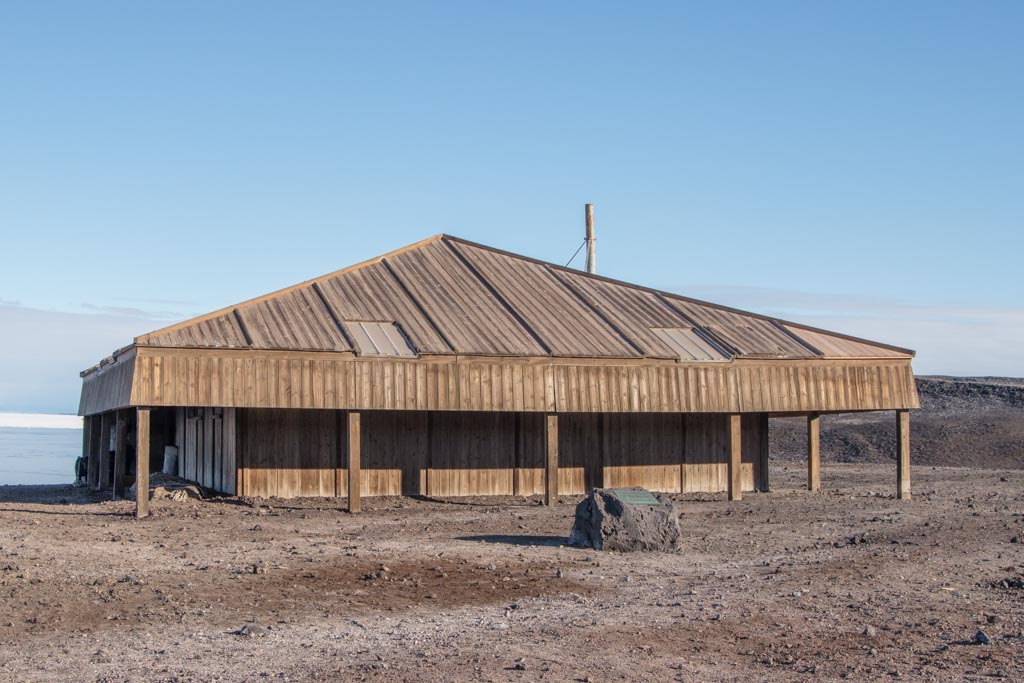
Discovery Hut
Built in 1902 during the Discovery Expedition by Robert Falcon Scott, Discovery Hut sits prominently atop Hut Point, just 300 meters away from McMurdo Station. Commonly, Discovery Hut is confused with Scott’s Hut located not far away at Cape Evans, also built during the British Antarctic Expedition of 1910–1913, led by Robert Falcon Scott in 1911. Discovery Hut has been designated a historic monument.
Discovery Hut would go on to be used throughout several expeditions that took place between 1902 and 1917. After Shackleton left the hut in 1917, it sat untouched until 1956 when US expeditions during Operation Deep Freeze dug it out from snow and ice. The cold helped to preserve Discovery Hut and its contents, though the seal meat left behind in their does not smell pleasant.
Get a copy of Bradt’s Antarctica wildlife guidebook before you set off for Antarctica
Scott Base (New Zealand)
Scott Base is the New Zealand Antarctic research facility, located at Pram Point on Ross Island, just on the opposite side of Ob Hill from McMurdo Station. The base houses 85 people during the summer season and a paltry 10-14 in the winter.
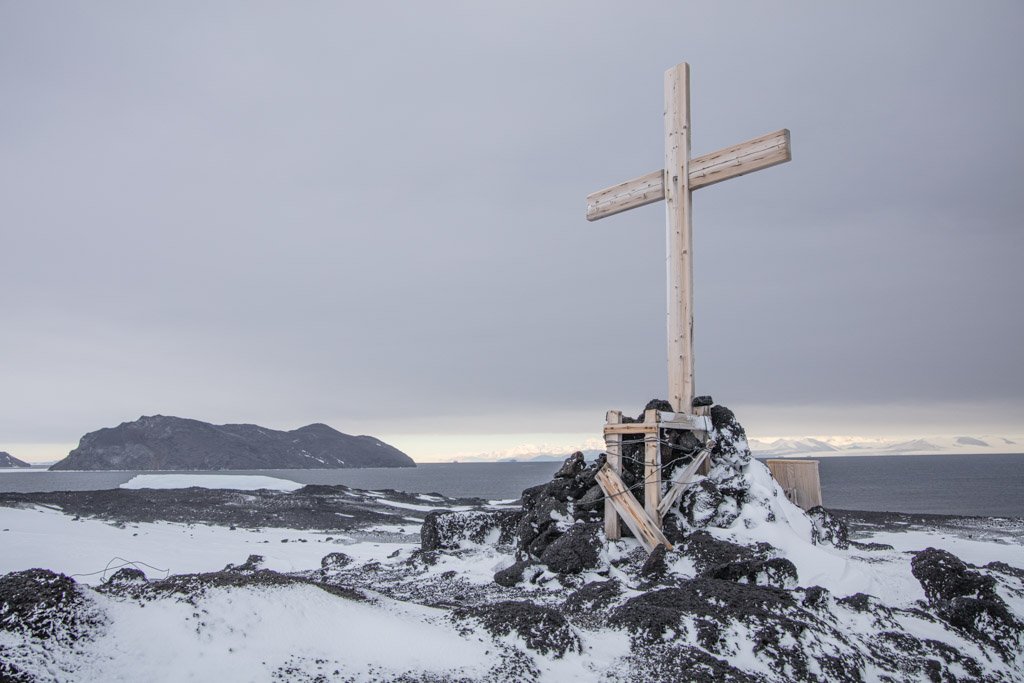
Scott’s Hut, Cape Evans
Located on the north shore of Cape Evans, toward the west of Ross Island sits Scott’s Terra Nova Hut. The hut was constructed in 1911, as Scott rejected the idea of reusing nearby Discovery Hut, a prefab construction, assembled in England before it made the journey down to Ross Island by ship. Significant effort was put into insulating Scott’s Hut, to make it warmer than Discovery, using layers of quilted seaweed and rubber ply.
A cross sits prominently outside Scott’s Hut constructed in memory of the three members of Shackleton’s Ross Sea Party, who died not far from here.
Similar to Discovery Hut, Scott’s Hut sat untouched until 1956 when it was rediscovered. Furthermore, Scott’s Hut is fairly well-preserved, owing to the fridge temperatures that plaque the area.

Mount Erebus
Mount Erebus is the second-tallest active volcano in Antarctica at a staggering 3,794 meters and the continent’s southernmost. Several expeditions have summited the volcano with an active lava lake at its apex. Mount Erebus is likely most famous as the site of the Mount Erebus Disaster when sightseeing flight Air New Zealand flight 901 in November 1979, killing all 237 passengers and 30 crew on board.
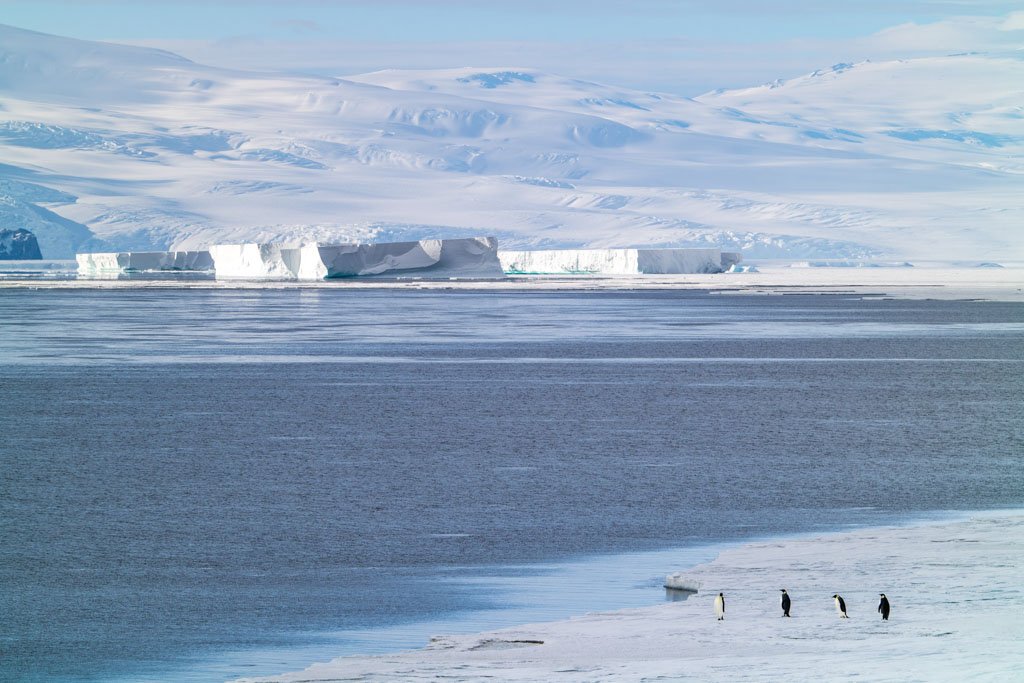
Mount Terror, Mount Bird, & Mount Terra Nova
The three inactive volcanoes of Mount Terror, Mount Bird, and Mount Terra Nova rise from Ross Island in the shadows of Mount Erebus at 3,230 meters, 1,765 meters, and 2,130 meters respectively.
Erebus Ice Tongue
The Erebus Ice Tongue is a seaward extension of Erebus Glaciers as it tumbles down off of Mount Erebus and into McMurdo Sound. The ice tongue juts 11 kilometers into McMurdo Sound from near Cape Evans on Ross Island. The calm waters protected by Cape Evans and Cape Royds help to preserve the Erebus Ice Tongue that was formed by the rapidly flowing glacier ice stream of Erebus Glacier.
Cape Royds extends from the west of Ross Island into McMurdo Sound, named after Lieutenant Charles Royds. Shackleton’s Hut was constructed at Cape Royds in 1908. Flagstaff Point is Cape Royds’ southernmost point.
Shackleton’s Hut
Built in 1908 during the Nimrod Expedition, 37 kilometers north of the previously built Discovery Hut located at Hut Point.
Shackleton’s Hut was designated a historic site, and in 2008 the hut was fully restored to its conditions at the time Ernest Shackleton and his party left it. Interestingly in 2006 five crates of McKinlay and Co. whisky were found buried under the hut.
Looking for inspiration? Check out 10 reasons to visit Antarctica
Coastal McMurdo Sound
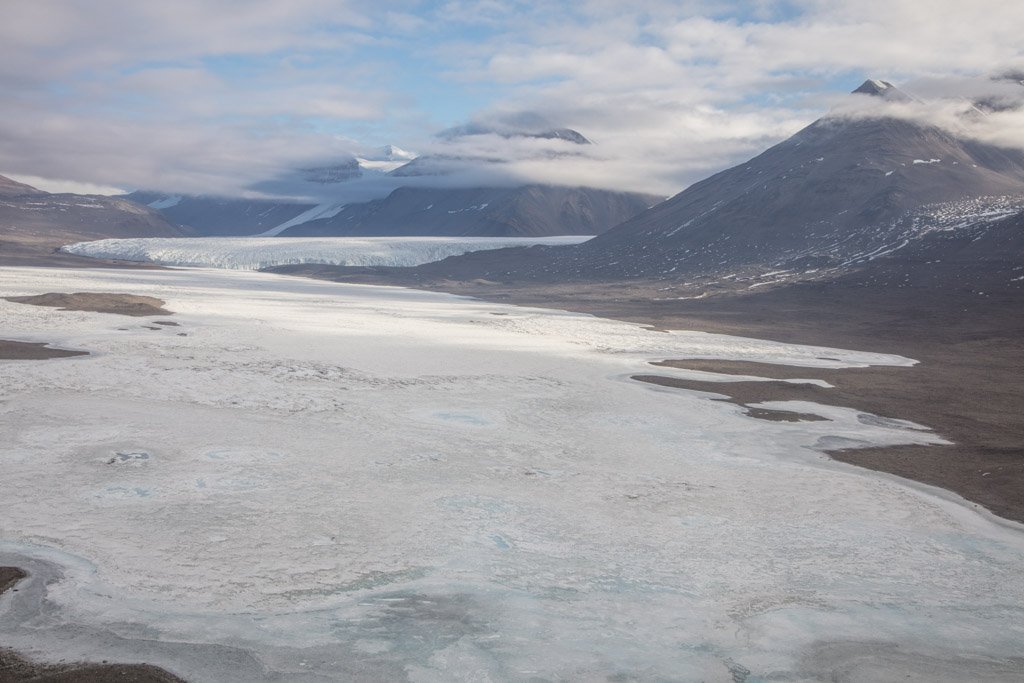
McMurdo Dry Valleys
Located west of McMurdo Sound, the McMurdo Dry Valleys are one of the strangest places on Earth. Victoria Valley, Wright Valley, and Taylor Valley are the three main valleys, with McKelvey, Belham, Barwick, Alanta, Stuiver, Wall, Virginia, Priscu, Pearse, Miers, Garwood, and Marshall Valleys all comprising the smaller valleys of the area. These snow-free* valleys are some of the driest places you’ll find on Earth.
The McMurdo Dry Valleys are in a unique location that allows for them to be so dry. The Transantarctic Mountains that back the valleys prevent seaward-flowing ice from spilling down from the East Antarctic Ice Sheet and onward into the Ross Sea. The Dry Valleys receive about 100 millimeters of precipitation (snow) per year, but it is typically evaporated almost instantly by the dry winds that plague this region.
Probably the most well-known and most fascinating feature of the McMurdo Dry Valleys is the Blood Waterfall that spews from the side of Taylor Glacier in Taylor Valley.
*Usually snow-free. My friend Darrell Day was in Taylor Valley this past February of 2020 standing in a foot of snow in a place where it pretty much never snows.
Read more about the McMurdo Dry Valleys and my experience there
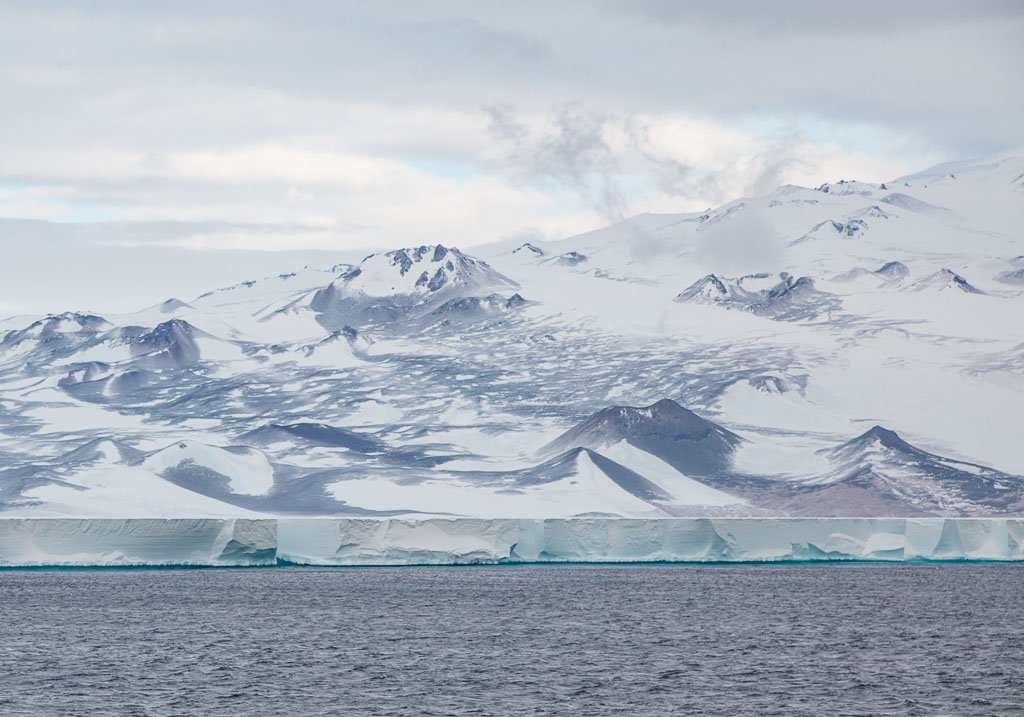
McMurdo Ice Shelf
The McMurdo Ice Shelf is a portion of the Ross Ice Shelf, the largest ice shelf in Antarctica, bounded by Ross Island and McMurdo Sound to the north, Minna Bluff, White Island, and Black Island to the south, and the Transantarctic Mountains to the west.
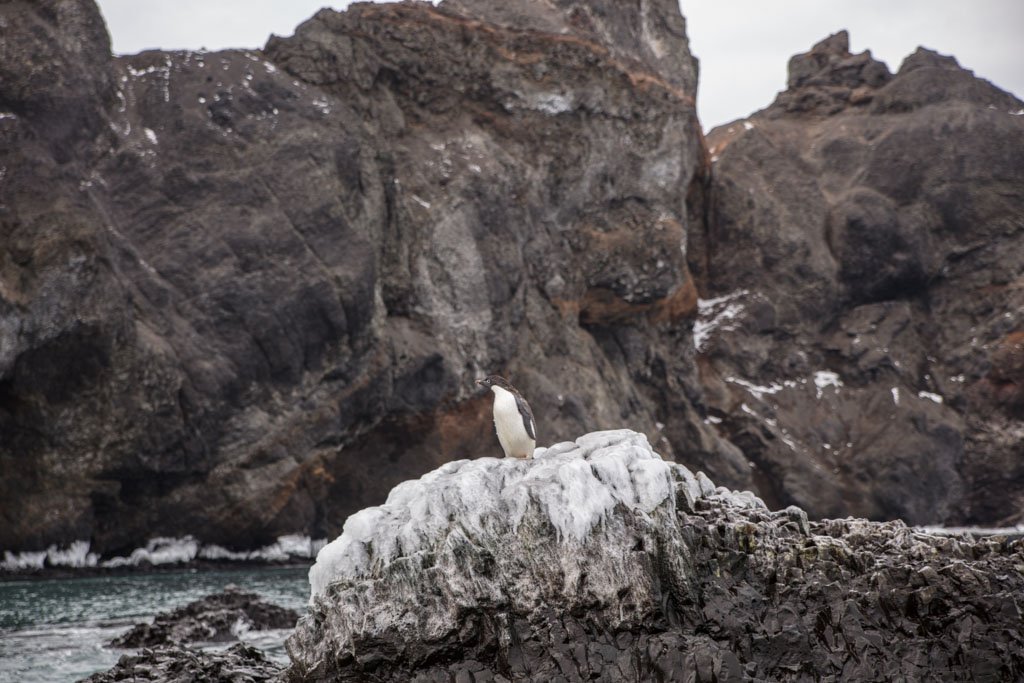
Franklin Island
Lying at the fringe of McMurdo Sound and Terranova Bay sits little Franklin Island, named after Arctic explorer Sir John Franklin and discovered by James Clark Ross in 1941. Franklin Island is the remnant of a shield volcano with its vent sunk off the east coast of the island.
Franklin Island is home to a large Adelie penguin colony, whose rookery is towered over by the looming cliff named Bernacchi Head.
Read up more on Franklin Island and its famous Adelie colony
Drygalski Ice Tongue
Extending out from Scott the Scott Coast, just south of Zucchelli Station sit the Drygalski Ice Tongue stretching 70 kilometers into McMurdo Sound from David Glacier, located in the Prince Albert Mountains of Victoria Land. Named after German Professor Erich von Drygalski, a Prussian-born Antarctic explorer. The Drygalski Tongue is thought to be at least 4,000 years old.
Terra Nova Bay
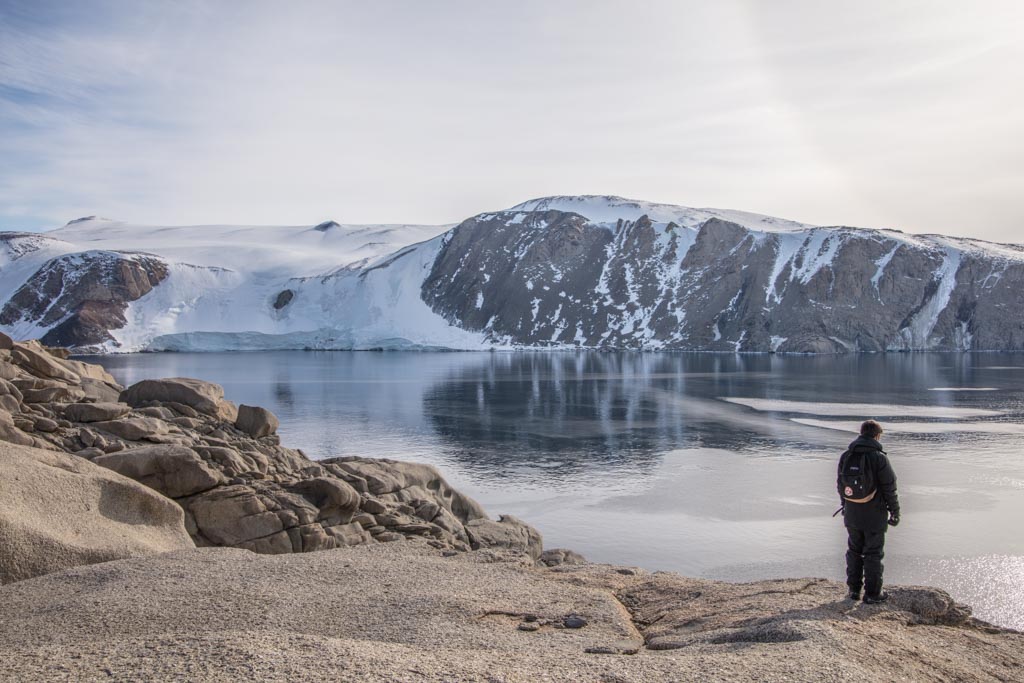
Zucchelli Station (Italy)
Zucchelli Station, named after Mario Zucchelli, who served as the director of activities for the ENEA-Unità Tecnica Antartitide as part of the National Antarctic Research Program (Italian Antarctic Program) for 16 years. It’s an Italian research facility, set at the edge of the Gerlache Inlet on the shores of Terra Nova Bay, just north of McMurdo Sound. Zucchelli Station is only open seasonally from October to February every year.
Jang Bogo Station (South Korea)
Jang Bogo Station sits at the terminus of the Gerlache Inlet between Zucchelli and Gondwana Stations. It is a South Korean research station named after the eighth-century maritime ruler of Korea who controlled the Yellow Sea. Jang Bogo is a newer station, completed in 2014 with the capability to house 60 staff in summer and 15 in winter.
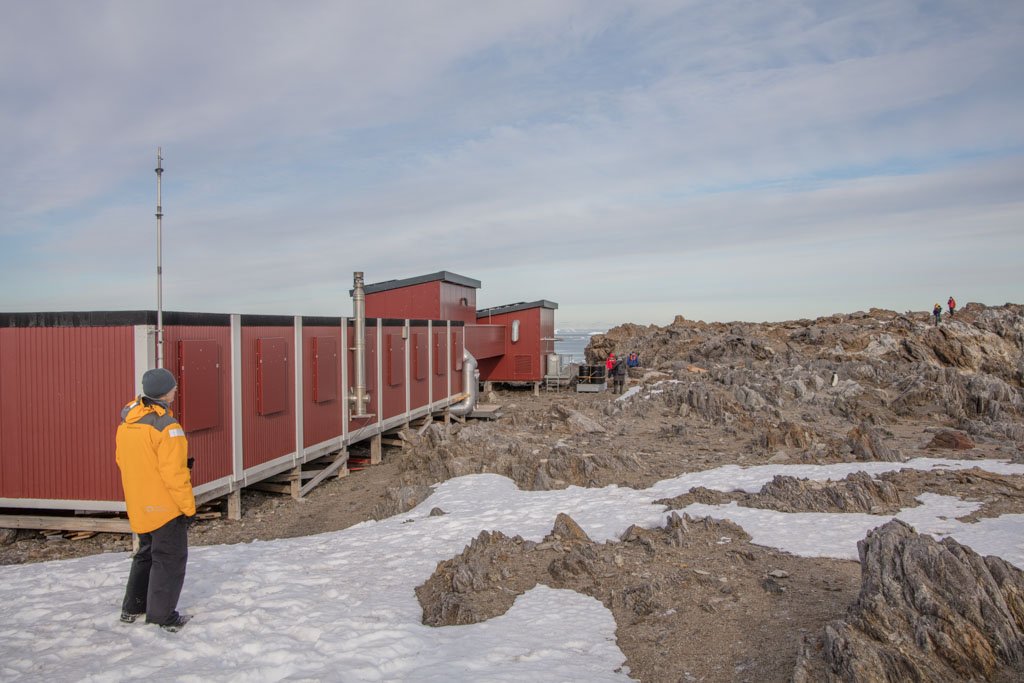
Gondwana Station (Germany)
Sitting just north of both Zucchelli Station and Jang Bogo Station along the Gerlache Inlet at the fringe of the Transantarctic Mountains sits Germany’s Gondwana Station. The station was built in 1983 and is operated by the Federal Institute for Geosciences and Natural Resources. The base supports the GANOVEX (German Antarctic North Victoria Land Expedition) during expeditions.
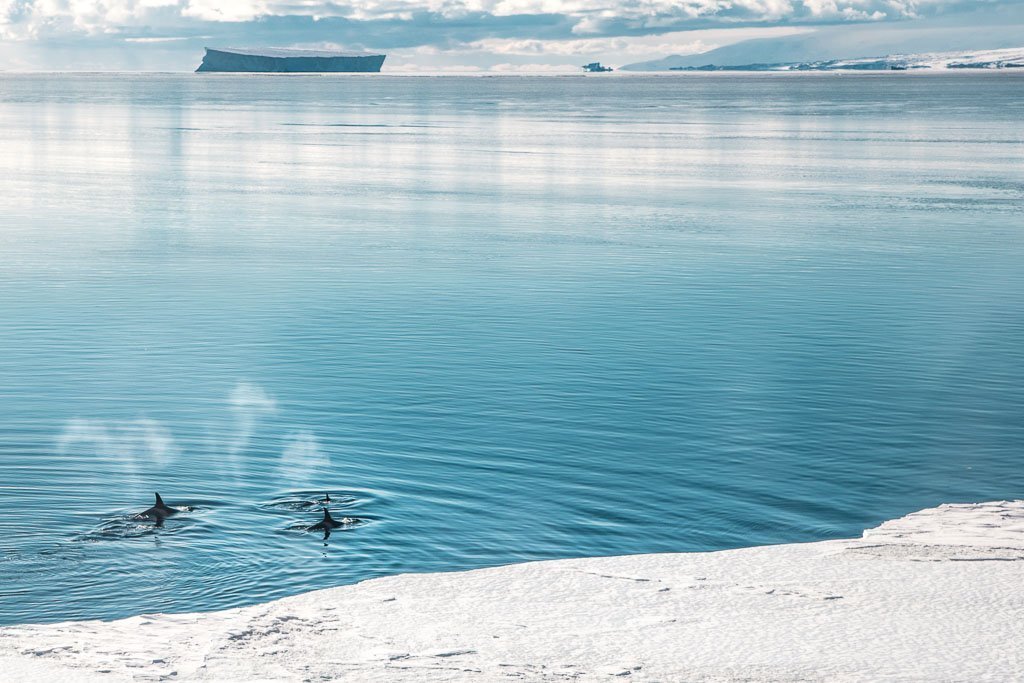
How To Visit McMurdo Sound
Unless you score a job at one of the Antarctic Bases centered around McMurdo Sound (the odds are not in your favor), your most realistic option for visiting the Ross Sea is via a Ross Sea cruise.
Oceanwide Expeditions offers a Ross Sea Crossing (this is the actual trip I did) that takes you between New Zealand and Argentina on a semi-circumnavigation of the continent. Another advantage of this trip is that there are helicopters aboard the M/V Ortelius.
Heritage Expeditions offers a Ross Sea trip that starts and ends in Bluff, New Zealand. Price-wise it’s roughly the same as Oceanwide’s Ross Sea Crossing.
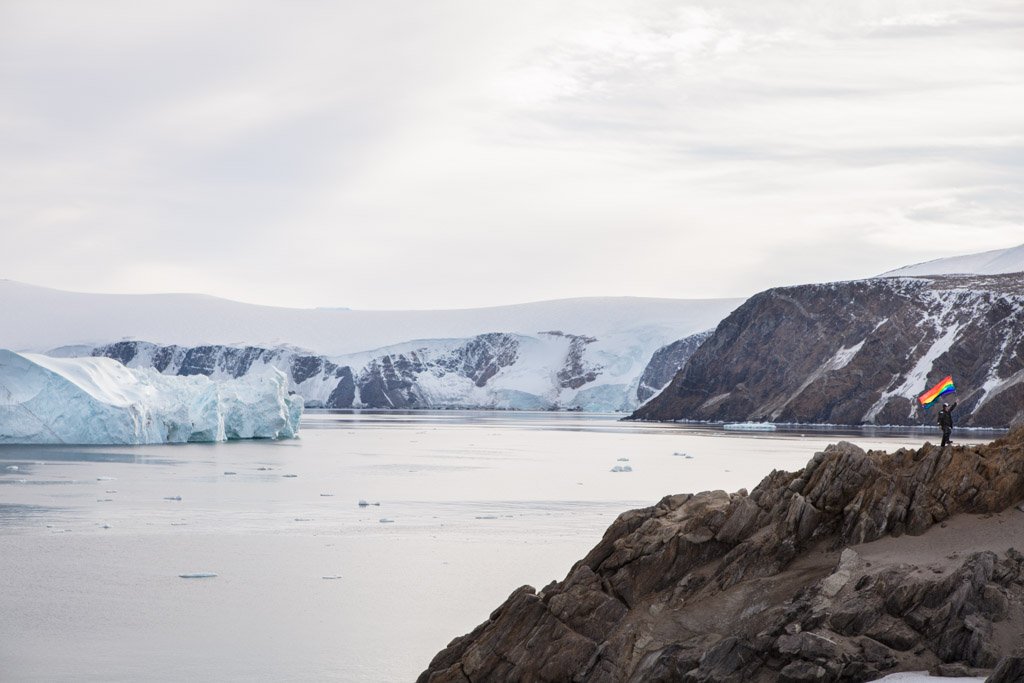
Have Any Questions About Visiting McMurdo Sound?
Ask in the comments section below.
More posts from Antarctica:
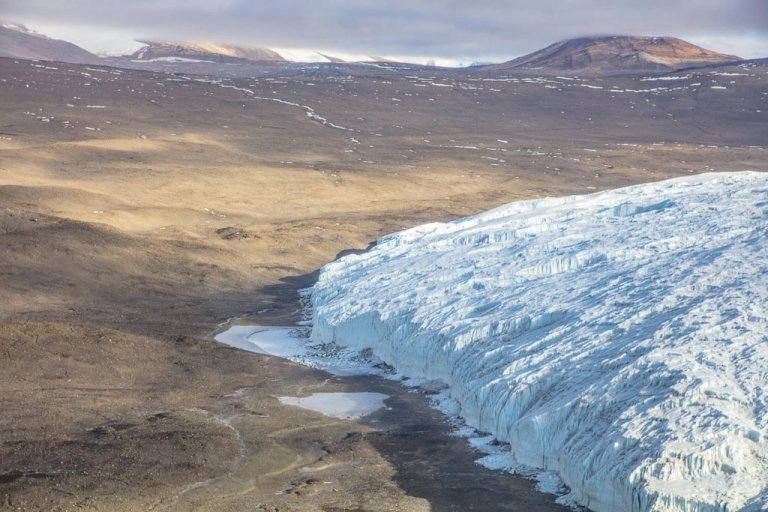
McMurdo Dry Valleys: Visit Mars Without Leaving Earth

Off The Beaten Path New Zealand: Campbell Island
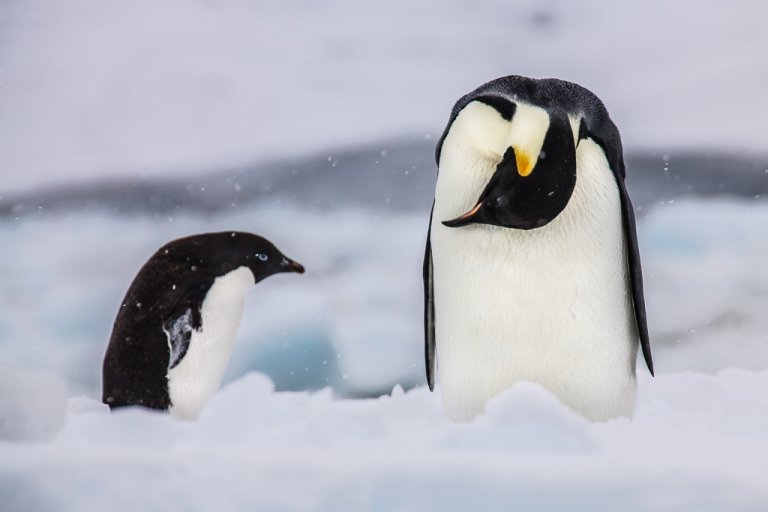
Antarctica Travel Guide
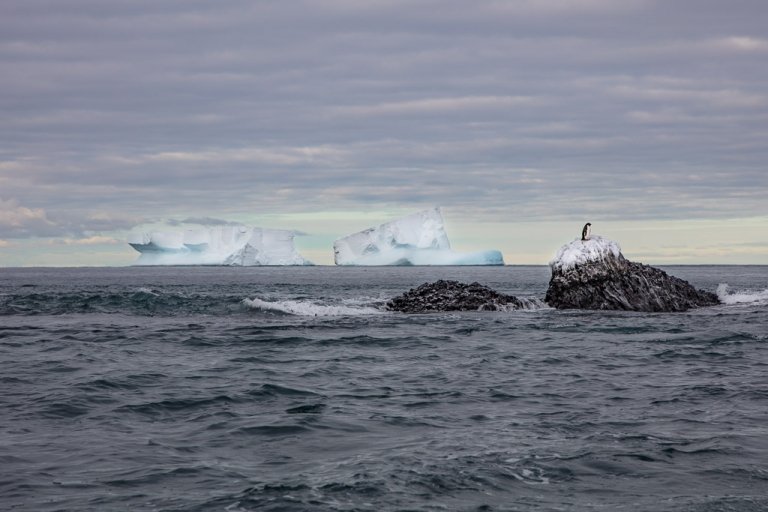
Franklin Island: Ice Glazed Volcanoes On The Fringe Of Antarctica
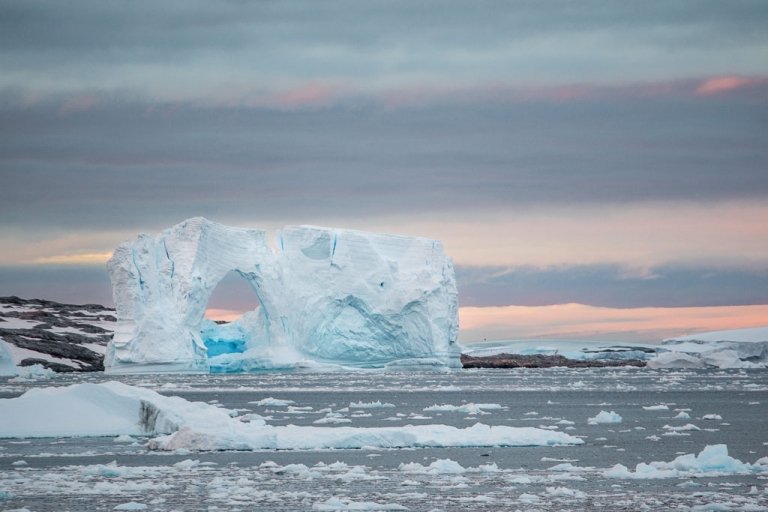
10 Reasons To Visit Antarctica
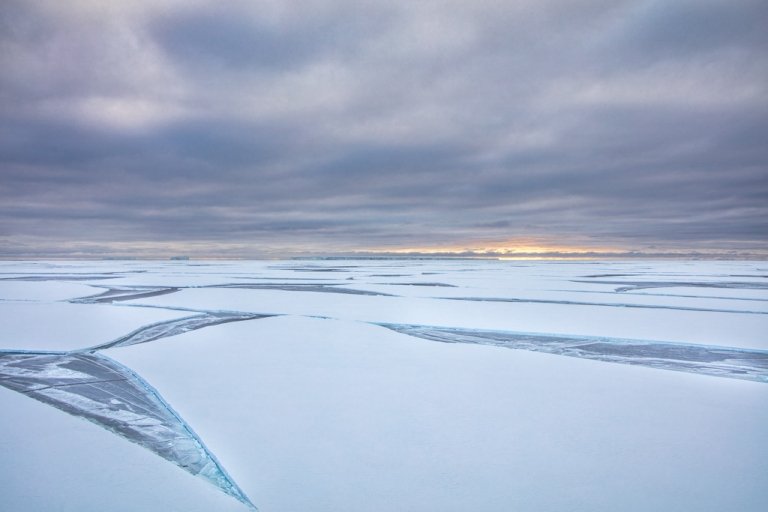
10 Reasons To Visit The Ross Sea
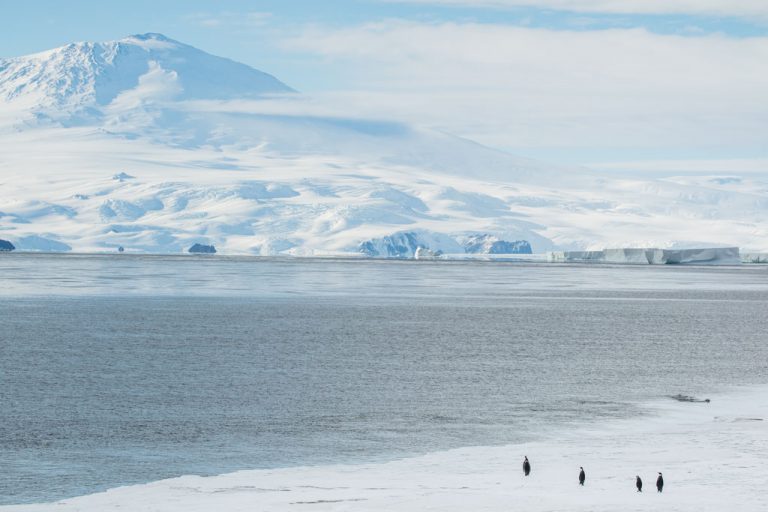
Sailing The Lemaire Channel
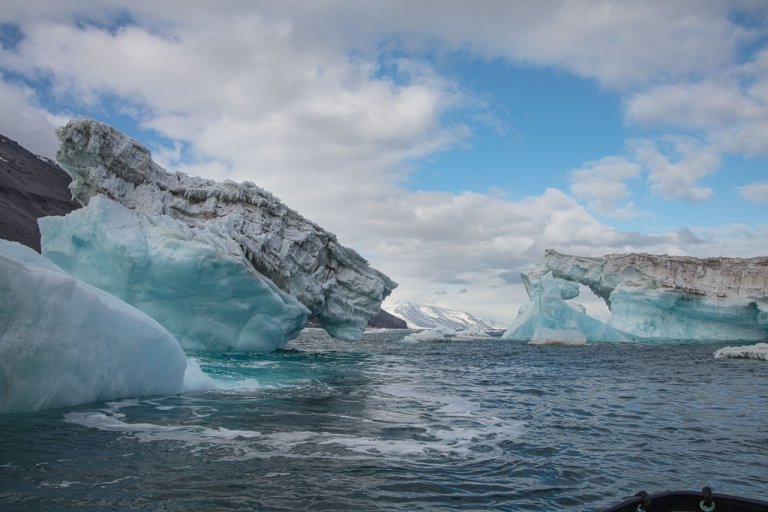
Preparing for Antarctica
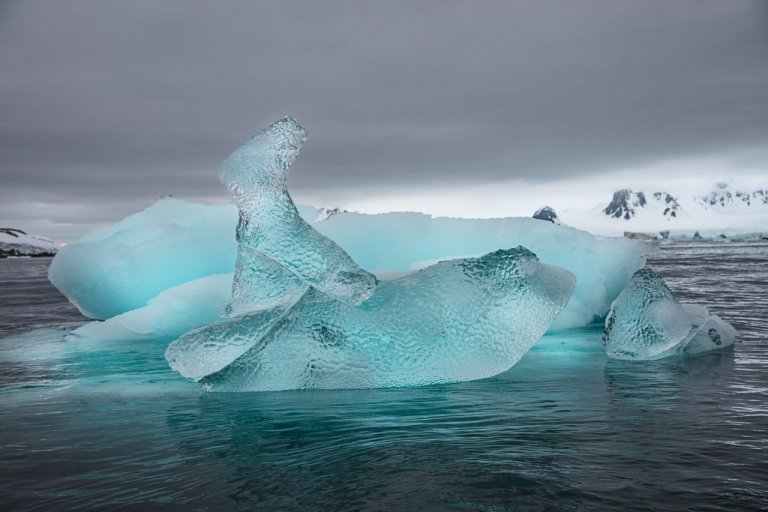
I’m going to Antarctica!
Leave a comment cancel reply.
Your email address will not be published. Required fields are marked *
Notify me of followup comments via e-mail. You can also subscribe without commenting.
This site uses Akismet to reduce spam. Learn how your comment data is processed .
- Central African Republic
- Democratic Republic Of Congo
- Indian Ocean
- Republic Of Congo
- South Africa
- Latin America
- Galapagos Islands
- North America
- Polar regions
- Arctic Canada
- Australasia
- Gorilla Tracking
- Grizzly Bears
- Polar Bears
- Puma Tracking
- Snow Leopards
- Blue Whales
- Bengal Tigers
- Siberian Tigers
- African Lions
- Spirit Bears
- Lowland Gorillas
- Experiences
- Jungle Holidays
- Bush and Beach Combinations
- Conservation Travel
- Natural World Heroes
- Work with Us
- Consumer Protection Overview
- Privacy Policy
- Press and Awards
- Client Reviews
- Expedition Leaders
- Specialist Leaders
- Expeditions for Change
- Journey to Natures Edge
- Country: Settings: Country:
- Currency: Currency:
- Call Us 01273 691642
- Destinations
- Gorilla Trekking
- EXPERIENCES
- Journey to Nature's Edge
Location Antarctica
Antarctic ross sea expedition.
Details 28 DAYS FROM 23000 PP
Best time to go Jan - Feb

Ross Sea Safari
Follow in the wake of Shackleton and Scott on this once in a lifetime safari to Antarctica and the Ross Sea. Explore untouched, rugged and wild landscapes, all relatively unexplored, in search of penguins, seals and much more.
A month long expedition to untouched parts of Antarctica. Starting in Invercargill, New Zealand, you head south exploring some of the most rugged and wild landscapes known to exist on the planet. Followed by huge numbers of seabirds, make your way towards the impressive Ross Sea, stopping en-route at the Auckland Islands, Campbell Island and more. Touching down in some of the most wildlife rich areas in the world, watch as each species thrives in this seemingly inhospitable habitat, whilst discovering the journeys of Shackleton and Scott, and even visiting research stations on the way.
Your expedition vessel, and home for the month, the Heritage Adventurer, provides an excellent base.

Our Antarctica Guide
The free, beautiful and comprehensive guide to Antarctica safaris and travel.


Antarctica Photography
The remote region of Antarctica is a photographer's paradise. From stunning ice statues to peppy penguins.

Safari Highlights
- Departs from New Zealand for a completely different tour of the Sub Antarctic region.
- Only a handful of expedition ships get to do this route each year, making it very unique.
- See vast penguin colonies, including ‘penguin city’ where the dapper inhabitants are fearless of strangers, and the largest colony of Adelie penguins in existence.
- Visit The Snares, Auckland Islands and the spectacular Ross Sea Ice Shelf.
- See a huge variety of birds in huge concentrations.

Talk to an Antarctica Specialist Today
What to expect.
Day 1 - Invercargill, New Zealand
Today we enjoy breakfast in the hotel restaurant and have the morning free to explore Queenstown before returning to the hotel for lunch and departing for the Port of Bluff to embark your ship. You will have time to settle into your cabin and familarise yourself with the ship; we will also take the opportunity to conduct a number of safety briefings. You are invited to join the expedition team in the Observation Lounge and up on the Observation Deck as we set our course to The Snares and our adventure begins.
Day 2 - Join the Expedition Ship
Take it easy this morning, with breakfast at your leisure in the hotel restaurant before heading to the Port of Bluff. Prior to embarking your expedition ship, you’ll have time to enjoy a visit the Southland Museum & Art Gallery to see the sub-Antarctic display. Once on board your home for the next few weeks, you’ll have time to settle into your cabin and unpack before we conduct some safety briefings. You’ll then be invited to join the expedition team on the bridge as your trip of a lifetime begins, by setting course to The Snares.
Day 3 - North East Island (The Snares)
The closest Subantarctic Islands to New Zealand, they were appropriately called The Snares as they were once considered a hazard for sailing ships. Comprising of two main islands and a group of five islands called the Western Chain; they are uninhabited and enjoy the highest protection as Nature Reserves. It is claimed by some that these islands are home to more nesting seabirds than all of the British Isles together. We plan to arrive in the morning, and as landings are not permitted, we will Zodiac cruise along the sheltered eastern side of the main island if the weather and sea conditions are suitable. In the sheltered bays, we should see the endemic Snares Crested Penguin, Snares Island Tomtit and Fernbirds. There are hundreds of thousands of Sooty Shearwaters nesting on The Snares; the actual number is much debated. Buller’s Albatross breed here from early January onwards. There will be opportunities to view the forests of large tree daisy Olearia lyallii which forms a canopy over much of the island group.
Day 4 - Auckland Islands - Enderby Island
The Auckland Islands group was formed by two volcanoes which erupted some 10-25 million years ago. They have subsequently been eroded and dissected by glaciation creating the archipelago as we know it today. Enderby Island is one of the most beautiful islands in this group and is named after the same distinguished shipping family as one of our own vessels. This northern most island in the archipelago is an outstanding wildlife and birding location and is relatively easy to land on and walk around. The island was cleared of all introduced animals (pests) in 1994 and both birds and the vegetation, especially the herbaceous plants, are recovering both in numbers and diversity. Our plan is to land at Sandy Bay, one of three breeding areas in the Auckland Islands for the Hooker’s or New Zealand Sea Lion, a rare member of the seal family. Beachmaster bulls gather on the beach, defending their harems from younger (ambitious) males, to mate with the cows shortly after they have given birth to a single pup. Hooker’s or New Zealand Sea Lion numbers are in a slow decline, for reasons which are not obvious but most probably connected with a nearby squid fishery. During our day ashore there will be several options, some longer walks, some shorter walks and time to spend just sitting and enjoying the wildlife. The walking is relatively easy. A boardwalk traverses the island to the dramatic western cliffs, from there we follow the coast and circumnavigate the island. Birds that we are likely to encounter include the following species: Southern Royal Albatross, Northern Giant Petrel, Auckland Island Shag, Auckland Island Flightless Teal, Auckland Island Banded Dotterel, Auckland Island Tomtit, Bellbird, Pipit, Red-crowned Parakeet, Yellow-eyed Penguin and Light-mantled Sooty Albatross. There is also a very good chance of seeing the Subantarctic Snipe.
Day 5 - At Sea
At sea, learn more about the biology and history of the Subantarctic Islands and the Southern Ocean through a series of lectures and presentations. We will be at sea all day, so it is another opportunity to spot pelagic species including (but not limited to) the Wandering Albatross, Royal Albatross, Shy and White-capped Albatross, Light-mantled Sooty Albatross, Grey-headed Albatross and Black-browed Albatross, Whitechinned Petrel, Mottled Petrel, White-headed Petrel, Cape Petrel, diving-petrel, Grey-backed and Black-bellied Storm-petrels. This is potentially some of the best pelagic ‘birding’ on the expedition.
Days 6 - 7 - Macquarie Island
Described by one Australian explorer as “One of the wonder spots of the world” this is the only place in the world where the beautiful Royal Penguin breeds. Three other species of penguins, the King, Gentoo and Rockhopper also breed here. You will never forget your first experience of a noisy ‘penguin city’, where the dapper inhabitants show no fear of their strange visitors and where you will be immersed in a tumult of chattering, feeding chicks; territorial disputes; petty pilfering and courtship displays. This all happens amongst the hundreds of Southern Elephant Seals lolling on the beaches and dunes. On arrival we meet with scientists and Park Rangers based here who will accompany us on all our landings.
Days 8-10 - At Sea
Soaring albatross and petrels circle the vessel as we steam south through the Southern Ocean. Lectures now concentrate on the Ross Sea region and beyond the bow of the ship; drifting icebergs of extraordinary shapes begin to appear. Manoeuvring in close for your first ice photographs we pass the Antarctic Circle and into the continent’s realm of 24-hour daylight.
Days 11-22 - Ross Sea Region
During our time in the Ross Sea region, we will visit the highlights of Antarctica’s most historic region. Due to the unpredictable nature of ice and weather conditions, a day-by-day itinerary is not possible. The Captain and Expedition Leader will assess daily conditions and take advantage of every opportunity to make landings or send you out in the Zodiacs. Our programme emphasises wildlife viewing, key scientific bases and historic sites, as well as the spectacular scenery of the coastal terrain, the glaciers and icebergs of the Ross Sea. Whilst specific landings cannot be guaranteed, we hope to visit the following: Cape Adare: A large flat spit of land, teeming with the staggering sight of Antarctica’s largest Adelie Penguin rookery: a tumult of chattering, feeding chicks, territorial disputes, petty pilfering and courtship displays. Curious penguins often come very close, offering superb photographic opportunities. Among the shifting mass of penguins we will find Carsten Borchgrevink’s Hut, the oldest in Antarctica, an overwintering shelter for the first expedition to the continent in 1899. Cape Hallett: The enormous Admiralty Range heralds our arrival; wild and extraordinary, the mountains rear up towering out of the sea to over 4,000-metres high and are bounded by colossal glaciers. We make our landing at an abandoned base site, now home to large numbers of Adelie Penguins and Weddell Seals. Franklin Island: Desolately beautiful and rugged, this is home to a large Adelie Penguin population and other nesting seabirds. We attempt a landing and explore the coastline. Possession Islands: Rarely-visited, small and rugged, these rocks support tens of thousands of penguins. Observe the birds’ busy and humorous activity, with the Admiralty Mountains forming a superb backdrop across the water. Ross Ice Shelf: The world’s largest body of floating ice and a natural barrier, at times creating hazardous weather, with sheets of snow blown at gale force by winds off the polar ice cap. Just 800 miles from the South Pole, this daunting spectacle prevented many early explorers from venturing further south. We cruise along its dizzying 30-metre high ice cliffs, perhaps lucky enough to see icebergs ‘calving’. Ross Island: Mount Erebus/Cape Bird/Shackleton’s Hut/Scott’s Hut(s) and visits to a scientific field station (Scott and McMurdo Stations are high on our wish list but ice, weather and station operational requirements often make them inaccessible). Ross Island was, and is, the ‘hub of activity’ in the Ross Sea, dominated by Mt Erebus, a monstrous active volcano named after the ancient Greek God of Darkness. The carefully preserved huts of the ‘Heroic Era’ help make the history come alive. If we can reach the bases, we will get a modern perspective on Antarctic Research. Terra Nova Bay: An Italian research station where the scientists are always hospitable and enjoy showing us around their lonely but beautiful home. They share with us their scientific research and also, perhaps, the best ‘espresso’ in Antarctica! Nearby is the German base, Gondwana Station, which is used occasionally and the South Korean station, Jang Bogo and on Inexpressible Island, China is building its fifth Antarctic base.
Days 23 - 25 - At Sea
En route to Campbell Island, take part in a series of lectures designed to prepare you for our visit tomorrow. Pelagic species abound here as they did en route to Macquarie Island earlier in our voyage. Above all, take the time to rest and enjoy shipboard life after the excitement of the Antarctic.
Day 26 - Perseverance Harbour (Campbell Island)
New Zealand’s southernmost Subantarctic territory, the Campbell Island group lies approximately 660-kilometres south of Bluff. We visit Campbell Island, the main island in the group, and spend the day exploring the island on foot from Perseverance Harbour, a long inlet cutting into the undulating landscape. Campbell Island is a truly magnificent place of rugged scenery, unique flora and abundant wildlife. Perseverance Harbour where we drop anchor is an occasional refuge for Southern Right Whales who come here to calve. Here we will find a now abandoned New Zealand meteorological station as well as Campbell Island Shags, penguins, fur seals and rare Hooker’s Sea Lions. The highlight of our visit is a walk to the hilltop breeding sites of Southern Royal Albatross, over six thousand pairs of which breed on Campbell Island. These magnificent birds, close relations to, and the same size as, the Wandering Albatross, have the largest wingspan in the world and are very approachable, making superb photographic subjects.
Day 27 - At Sea
At sea en route to the Port of Bluff, take the opportunity to relax and reflect on an amazing experience. This is a good opportunity to download and edit any remaining photos while they are fresh in your mind and you have the experience of our expedition team on board for questions. We will recap the highlights of our expedition and enjoy a farewell dinner tonight as we sail to our final port.
Day 28 - Invercargill/Queenstown
Early this morning we will arrive in the Port of Bluff. After a final breakfast we bid farewell to our fellow voyagers and take a complimentary coach transfer to either Invercargill or Queenstown Airports. In case of unexpected delays due to weather and/or port operations we ask you not to book any onward travel until after midday from Invercargill and after 3pm from Queenstown. Note: During our voyage, circumstances may make it necessary or desirable to deviate from the proposed itinerary. This can include poor weather and opportunities for making unplanned excursions. Your Expedition Leader will keep you fully informed. Landings at the Subantarctic Islands of New Zealand are by permit only as administered by the Government of New Zealand. No landings are permitted at The Snares.
Your Accommodation
Heritage adventurer.
Heritage Adventurer (formerly known as MS Hanseatic) is often referred to as the ‘Grande Dame of Polar Exploration’ due to her celebrated history and refined design. She was purpose-built for adventure in 1991 at Finland’s Rauma shipyard and specifically designed for Polar exploration with a 1A Super Ice Class. She has held records for the most northern and southern Arctic and Antarctic navigations, and for traversing both the Northwest and Northeast Passages. Accommodating 140 passengers (originally designed for 184 guests), the Heritage Adventurer offers a spacious stylish, and comfortable home for your expedition.

Dates & Prices Antarctica

In the Wake of Scott and Shackleton
Antarctica: voyage through the ross sea.
New Zealand, Antarctica
From $29,450
Call 1-800-368-2794 or contact us for any questions
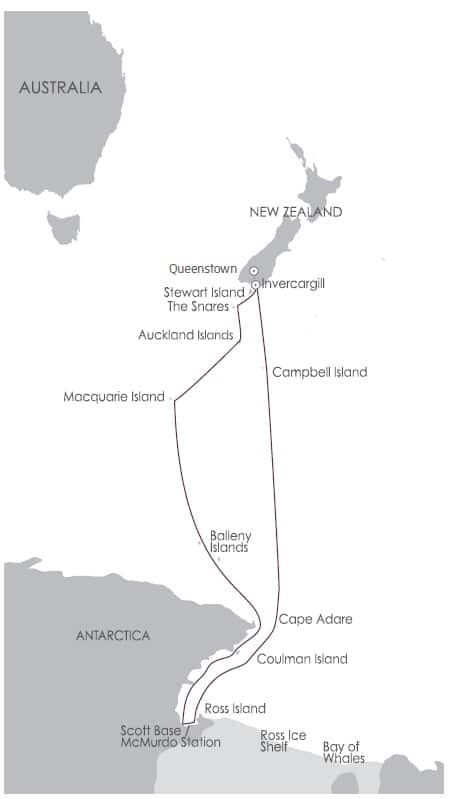
Arrive: Queenstown, New Zealand
Depart: Invercargill or Queenstown, New Zealand
- Follow in the footsteps of early Antarctic explorers and see a dramatic landscape unchanged since the "Heroic Age"
- Visit and photograph penguin rookeries, seals on ice floes, historic huts, and scientific research stations
- Explore sub-Antarctic islands, including Macquarie Island, the only place where the beautiful royal penguin breeds
- Zodiac cruise along The Snares, home to hundreds of thousands of nesting seabirds
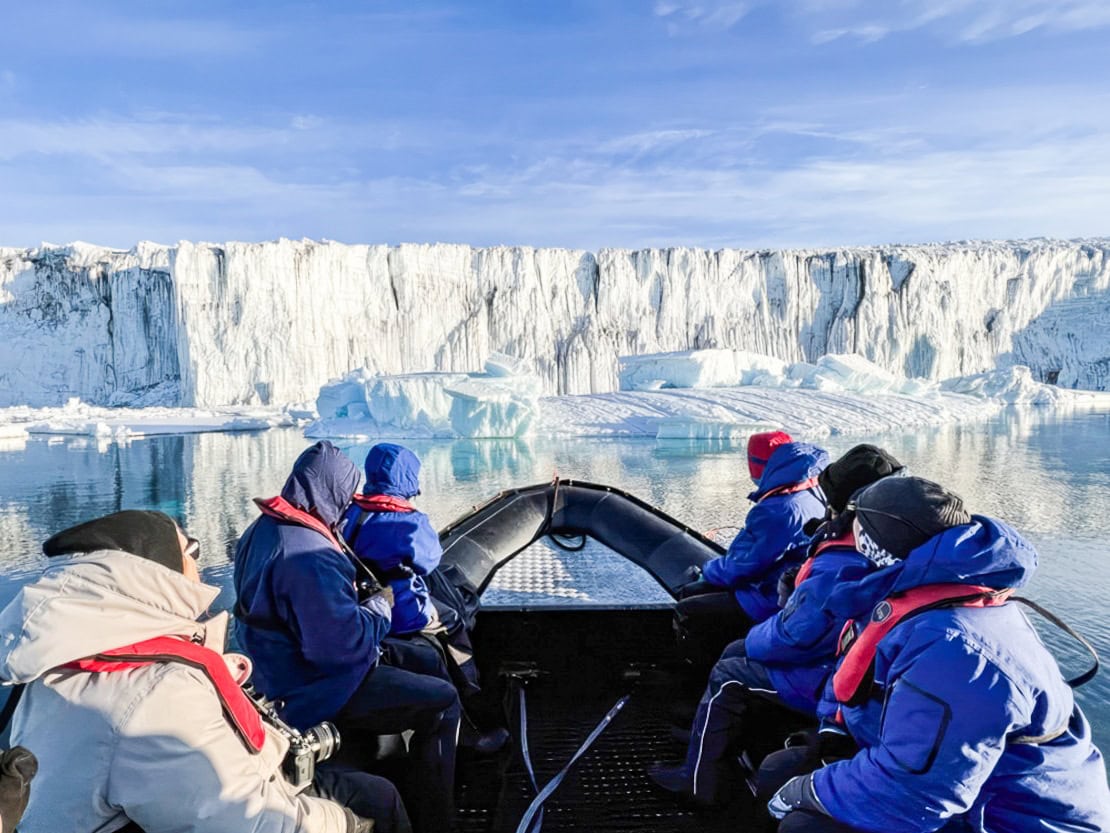
Note: This trip is not exclusive to, nor operated by, Wilderness Travel, who acts solely as an agent in booking your reservation with the operator. Please download the Rate Sheet in the Dates & Pricing section to see the full pricing details and contact our Cruise Collection Specialists to check availability.
Dates & Pricing
Payment & cancel schedule.
At time of reservation: 25% of trip cost 100 days prior to departure: Balance Please note that this differs from our standard policy.
Cancellation & Transfer Schedule
Minimum fee: $750 per person 91-179 days prior to departure: 25% of trip cost 90 days or less: 100% of trip cost
Please note that this differs from our standard policy.
- One night hotel accommodation in Queenstown including dinner and breakfast
- 26-night cruise in well-appointed accommodations on board the Heritage Adventurer
- All meals onboard including house wine, beer, and soft drinks
- Pre- and post-cruise transfers
- All shore excursions and activities
- Knowledgeable guides, onboard lectures
- Landing fees
Not Included
- Travel to/from points of embarkation and debarkation of the ship
- Pre- or post-trip accommodations other than stated above
- Optional gratuities to Trip Leaders or staff
- Travel, health, accident, or other insurance (required)
- Other expenses of a personal nature (some alcoholic beverages, laundry, etc.)
- Taxes or government fees
- Passport or visa fees
Accommodations
Scroll through our signature accommodations for this trip below. Although it is highly unlikely, we may make substitutions when necessary.
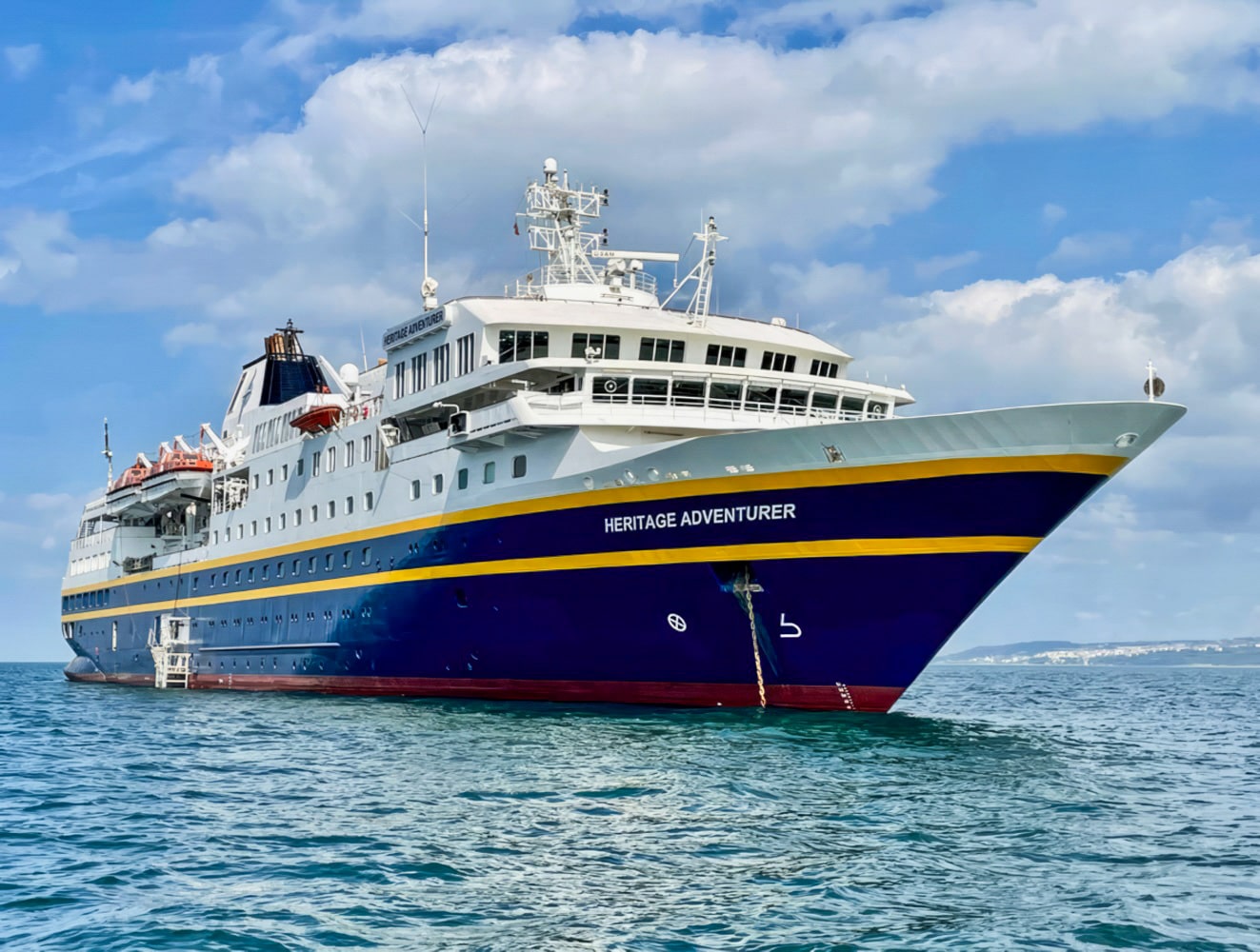
Heritage Adventurer
Days 1-27 (27 nights)
What the Trip is Like
Other trips you might like.
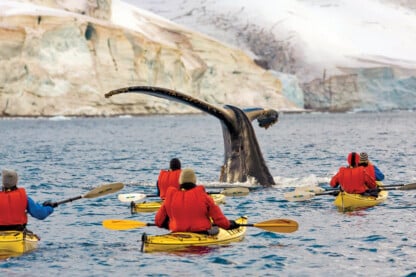
Cruise Collection
Argentina, Antarctica
From $8,650
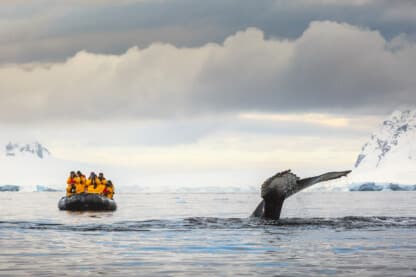
Antarctica and South Georgia Sail & Fly Cruise
Argentina, Chile, Antarctica
From $19,195
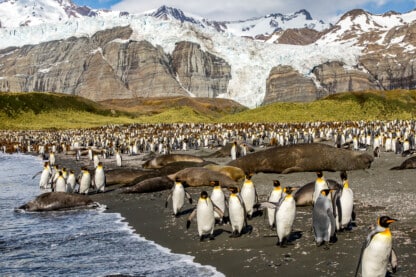
Antarctica, South Georgia, and the Falkland Islands
From $14,795
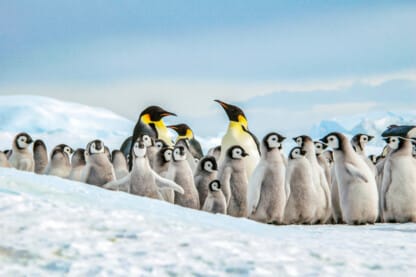
Weddell Sea: In Search of Emperor Penguins
From $12,100
Book your trip today
Our Area Specialists know every detail about our tours. They will be happy to answer any questions and help you choose the journey that’s right for you. Contact us to learn more or book your trip today!
Submit the form below to download itinerary
Trip Download Itin
Trip Levels
With more than 200 different adventures to choose from, we want to help you find the trip that’s right for you. Our Trip Level system ranks each trip in two ways: a number rating from 1 to 6 according to the activity, and general travel rigors. 1 is the easiest and 6+ the most difficult—see descriptions below for explanations of each number. A plus (+) sign means the trip is a bit more strenuous than other trips of that level. The detailed explanation of each trip—below the bar with the number rating—is perhaps more important, specifying activities, altitudes, hiking, and travel conditions. The Detailed Itinerary, available by download or mail, gives further information. Our Area Managers can also answer questions and guide you to the trip that best suits your interests.
Level 1 – Easiest
Non-camping journeys, optional walks, little elevation gain or loss.
- Royal Rajasthan and Villages of India
- Small ship cruises
Level 2 – Easy to Moderate
Hotel nights and/or safari-style camping, hikes of two to four hours on some days. Other physical activities are sometimes included, such as optional sea kayaking.
- Our African safaris
- Costa Rica Wildlife
Level 3 – Moderate
Half- to full-day hikes (3-6 hours) over rolling countryside on most days, occasional steep trails. Many of our hotel-based walking tours are in this category, as are our snorkeling adventures.
- Tuscany & the Cinque Terre
- Argentina: Hikes and Estancias of Patagonia
- Palau Snorkeling & Sea Kayaking
- Some trips with minimal hiking but rugged travel conditions or long drives, such as Tribal Ghana, Togo & Benin, are Trip Level 3.
Level 4 – Moderate to Strenuous
Full-day hikes (4-6 hours), mountainous terrain, significant elevation gains and losses (hiking up or down as much as 3,000 feet) on many days. Altitudes no greater than about 10,000 feet.
- Ultimate Patagonia
- Hiking the Spanish Pyrenees
Level 5 – Strenuous
Full-day hikes (4-8 hours), mountainous, steep terrain (hiking up or down as much as 3,500 feet) on many days. Trips with hiking at average altitudes of 10,000 to 12,000 feet are in this category.
- Inca Trail to Machu Picchu
- Everest Lodge to Lodge
Level 6 – Very Strenuous
Full-day hikes (5-8 hours), mountainous, steep terrain (hiking up or down as much as 3,500 feet) on many days. Most hikes take place at altitudes above 10,000 feet, with some days ascending as high as 18,000 feet.
- Everest Base Camp
- Climb Kilimanjaro!
Travel Cravings
Ross island, antarctica.

Many researchers and scientists are anxious for favorable conditions, so they can safely travel to Ross Island. The island is home to two major research facilities, McMurdo Station and Scott Base, operated by the United States and New Zealand, respectively. McMurdo Station is famous for its polar diving operations. Wind energy is being studied at Scott Base. More than 1,300 experts descend on the island during the summer months.
Ross Island is one of eight islands in the Ross Archipelago, which sits off the coast of Victoria Land in McMurdo Sound. The island was formed by four volcanoes. After Sir James Clark Ross discovered it in 1840, it became a base for early Antarctic expeditions. Huts from this time period still stand on the island today. Most of the year, an ice shelf connects Ross Island—and the other islands in the archipelago—to the mainland. Only the peaks of the volcanoes are free of ice and snow. So, as the temperature inches closer to the freezing point, activity increases on the island.
In addition to the research stations, Ross Island is known for its superlatives. It’s the southernmost island and the sixth-highest island on Earth. It was formed by Mount Erebus, the second-highest volcano on Antarctica and the southernmost active volcano in the world. The volcano is no doubt smoking right now. It’s also home to Cape Royds, one of the largest colonies (about a half million) of Adélie penguins, which are about to start breeding. No wonder the excitement is building in the Southern Hemisphere.
Share this:
Leave a comment cancel reply.
This site uses Akismet to reduce spam. Learn how your comment data is processed .

- Already have a WordPress.com account? Log in now.
- Subscribe Subscribed
- Copy shortlink
- Report this content
- View post in Reader
- Manage subscriptions
- Collapse this bar

Solopassport

A Day of Ruins and Wonders: Ross Island from Port Blair (2024)
Andaman and Nicobar islands constitute of such amazing islands and history. Ross Island is yet another island that is beautiful and a very interesting place to visit. The island has a lot of history and currently the island still is home to many ruins. There are also a lot of deer, peacocks and peahens on the island.
Page Contents
PIN for later reference

This article may contain affiliate links, meaning if you decide to purchase via my links, I may earn a commission at no additional cost to you. For complete information, please see our affiliate disclaimer here .
Disclaimers:
- The prices mentioned in the post are valid only at the time of publication. Ensure that you check the booking websites for up-to-date information and prices.
- My opinions and views are unbiased. If the post is a collaboration, then they are specifically mentioned.
- Ensure that you check the relevant websites for up-to-date information on COVID protocols.
- For any adventurous activities, please note that there is a risk that can be dangerous. Ensure you read the terms and conditions recommended by individual agencies and do them at your own risk.
- For visas, it is best to see the embassy website for changing rules.
- While using the recommended guides, auto-drivers or taxi drivers, do your due diligence and trust your judgement.
Andaman and Nicobar Islands Travel Resources For Best Hotel Deals in Andaman and Nicobar Islands, use Booking.com or Goibibo For Hostels in Andaman and Nicobar Islands, use HostelWorld Use Skyscanner or Trip.com to get affordable flight tickets to Andaman and Nicobar Islands Viator and GetYourGuide are your best tour operators Rentalcars and Discover cars are the best agencies to rent out cars at lowest prices For comprehensive travel insurance, use SafetyWing or WorldNomads Travel Blogs : One Week in Andaman and Nicobar Islands Travel Guide to Havelock Island Scuba Diving in Havelock Island Travel Guide to Neil Island Scuba Diving in Neil Island Plan Your Visit to Chidiya Tapu One Day Trip to Baratang Island One Day Trip to Ross Island from Port Blair Never Forgotten Tales of Cellular Jail One Day Trip to Jolly Buoy Island from Port Blair Reasons To Skip North Bay Island
About Ross Island
Officially known as Netaji Subhash Chandra Bose island, the Ross island is an abandoned island from the British settlement. The island was originally known as Chong-Ekee-Bood and is smallest island in Andaman islands.
Located at the mouth of Port Blair harbour in South Andaman district, this stunning island was named after the British marine surveyor, Sir Daniel Ross . In December 2018, the island was renamed to Netaji Subhash Chandra Bose island.
There are around 100 inhabitants living on the island.
The Ross island is very picturesque and is one of the best islands I have visited in Andaman islands. It is a place where history comes together with striking nature. And the island also has lots of coconut and palm trees.
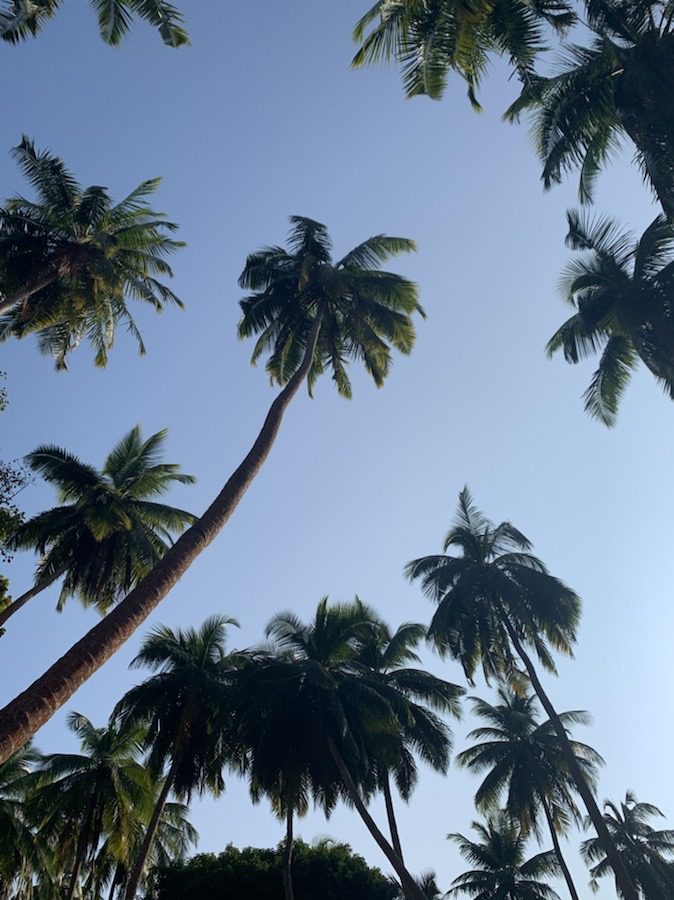
Established in 1858, the Ross island was an administrative headquarters till 1945/46 and it was abandoned after that. There are still ruins of the bakery, church, tennis court, the Chief commissioner’s residence and other notable buildings. Netaji Subash Chandra Bose stayed on the island in 1943 during his visit to Andaman islands. Currently, the island is administered by Indian government.
To learn about the stories of our freedom fighters, read never forgotten stories at Cellular Jail .
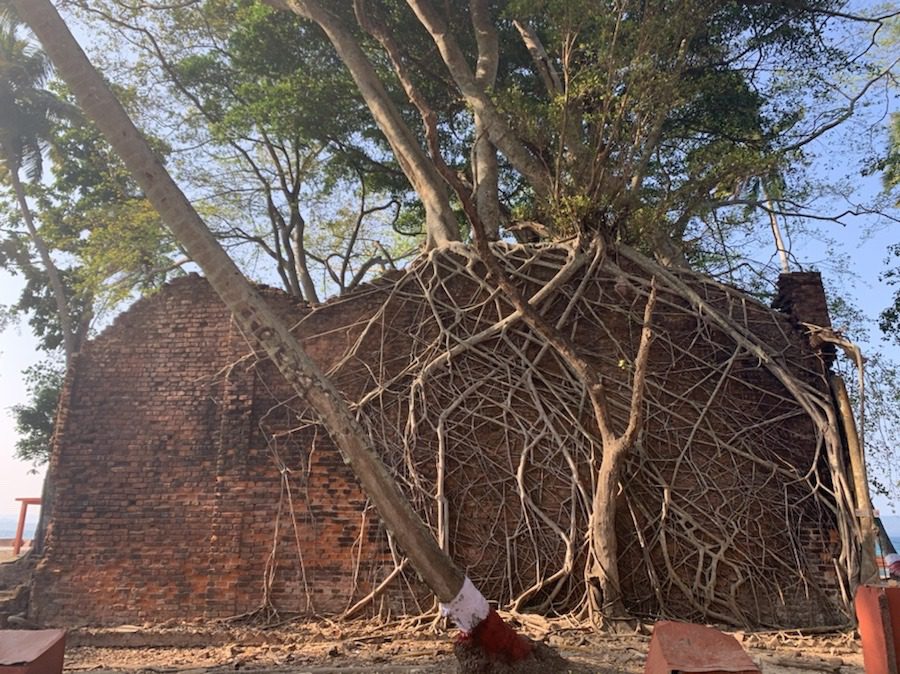
You need at least 2 to 3 hours to cover all the places on the island. And the best time to visit Ross island is in the morning as the day does get hot, especially during the summer season.
I highly suggest vacationing in Andaman and Nicobar islands during the winter season (between the months of October and February). The first time I visited Andaman during April and it was a huge mistake as it was extremely hot. But the second time around, I visited in January and it was the best as the days were pleasant and cool.
How to Get to Ross Island?
- Ross island is very close to Port Blair (around 2 kilometres) and it just takes 25 to 30 minutes by ferry.
- Ferries depart from Aberdeen Jetty in Port Blair and the ticket for ferry trip can be purchased at the jetty.
- Visiting Ross island is a day trip from Port Blair and the cost for a ferry return trip is INR 350 per person. The trip can also be extended (INR 850) to visit North Bay Island . Even though the North Bay Island is pretty, I suggest skipping the visit unless you have a lot of time.
- Note: The last ferry is at 5 PM so make sure to be at the jetty well in time.
Things to See on Ross Island
A few things to note while visiting Ross island are:
- There are golf courts available on the island and one can use them to travel between the places.
- The island has toilet facilities.
- There is only one restaurant with limited food options. Only cash is accepted.
- There is no stay options on the island and the visitors will need to be back to Port Blair by evening. The last ferry leaves at 5 PM from Ross island.
- The island does not have any shops for buying souvenirs.
- Do not feed the deer and peacocks.
- Take your rubbish with you and do not throw the garbage everywhere and only throw it at dedicated bins.
You can also visit Jolly Buoy island as a one day trip from Port Blair.
Stop by at Presbyterian church
The Presbyterian church is a ruin of an old protestant church. It is built out of stone and frames out of teak. The quality of the materials used in building was so good that it has survived for so many years. Definitely stop by the church to learn and understand how the churches were built during that time.
Watch the deer at deer park
The island has a deer park that has spotted deer. And there are lots of them on the island. It is great to see these deer enjoying and living lives without any threat. Some of them come real close too but remember not to feed them.

Walk around the island to see ruins
The Ross island tells a story from the past. There are still ruins of the old settlement and buildings, such as bakery, water treatment plant, hospital, cemetery and many more. A walk around the island is a great way to go around and see these buildings that talk about our history.
You can also take a golf cart to travel between the places.
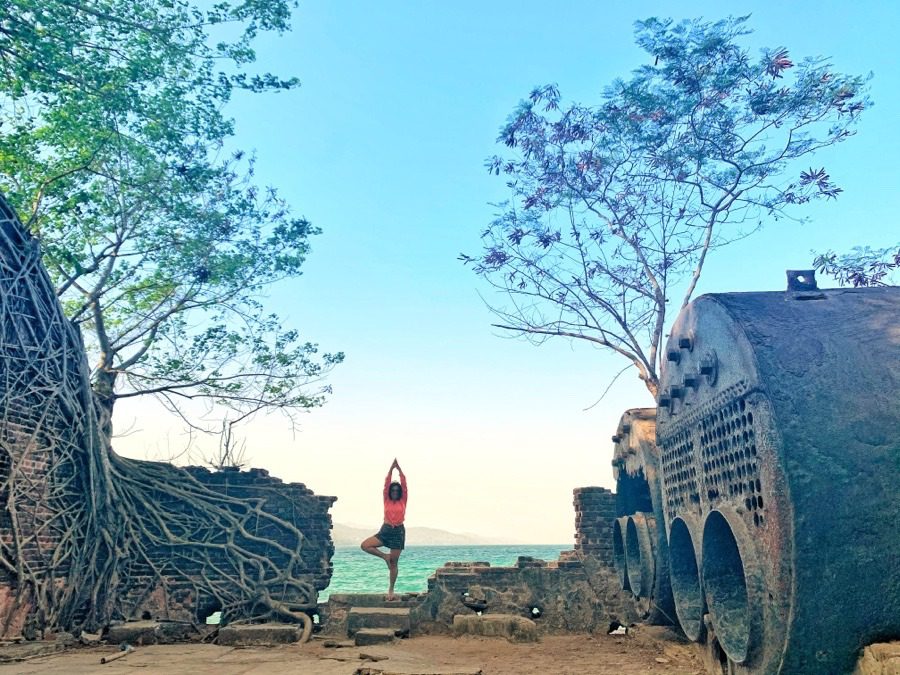
Safety for solo female travelers
Yes, Ross island is definitely very safe for solo female travelers. The island is monitored and administered by Indian government and hence there are always people on the island. Make sure to catch the last ferry to Port Blair as there are no stay options on the island and staying at Ross island is not allowed.
Are you new to solo traveling? Do you have questions about solo traveling? Read frequently asked questions on solo traveling .
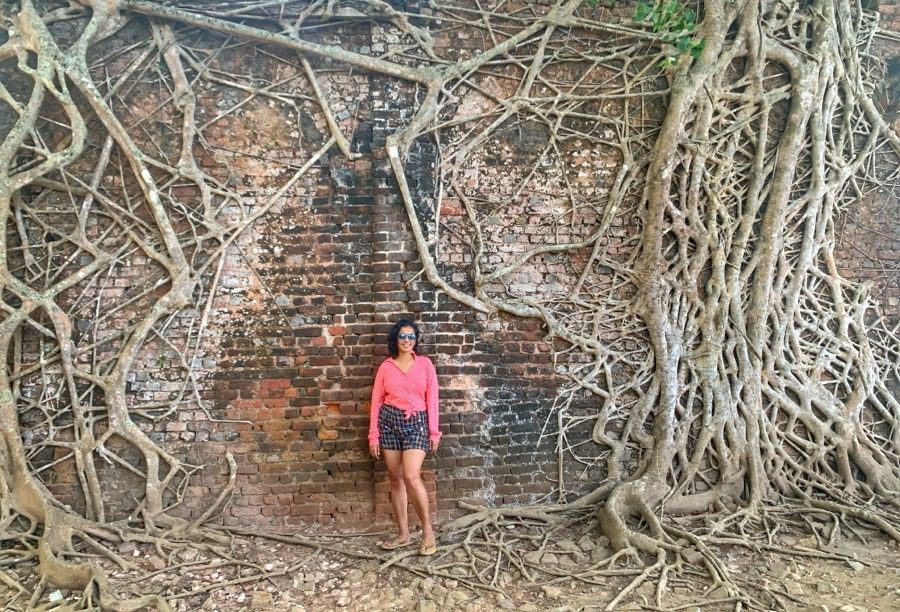
Closing Notes
It is worth visiting this charming island? Absolutely yes! It is definitely one of the spectacular islands in Andaman islands and I highly recommend visiting it and making it a one day trip from Port Blair.
Have you been to Ross island? Did you like it? Let me know in the comments below.
How can you support me? You know how much I love coffee, so you can buy me a coffee – Buy me Coffee! Or you can purchase from one of the below travel resources without any extra charge to you: Travel Resources Book your flight on Skyscanner.com or Trip.com Reserve your accommodation on Stay22 Reserve your stay at a hostel on HostelWorld Use RentalCars or DiscoverCars for hiring self-driven cars Book your tours and travels or purchase tickets on Viator or GetYourGuide For a universal SIM card, use DrimSim Buy comprehensive travel insurance on SafetyWing and WorldNomads
If you liked this article and if it was helpful in your planning or traveling, do share, tweet, or pin this post. Follow me on Instagram | Facebook | YouTube | Twitter | LinkedIn
Do you have a question? Do you want any suggestions and tips for travel, hikes, and scuba dives? Use the Subscription box below to sign up and get updates by email.
Learn how to plan more, travel more, & live more
Get valuable travel tips and tricks, travel inspirations and listen to my stories in your inbox.
You cannot copy content of this page!
Explore one of Antarctica’s most iconic regions
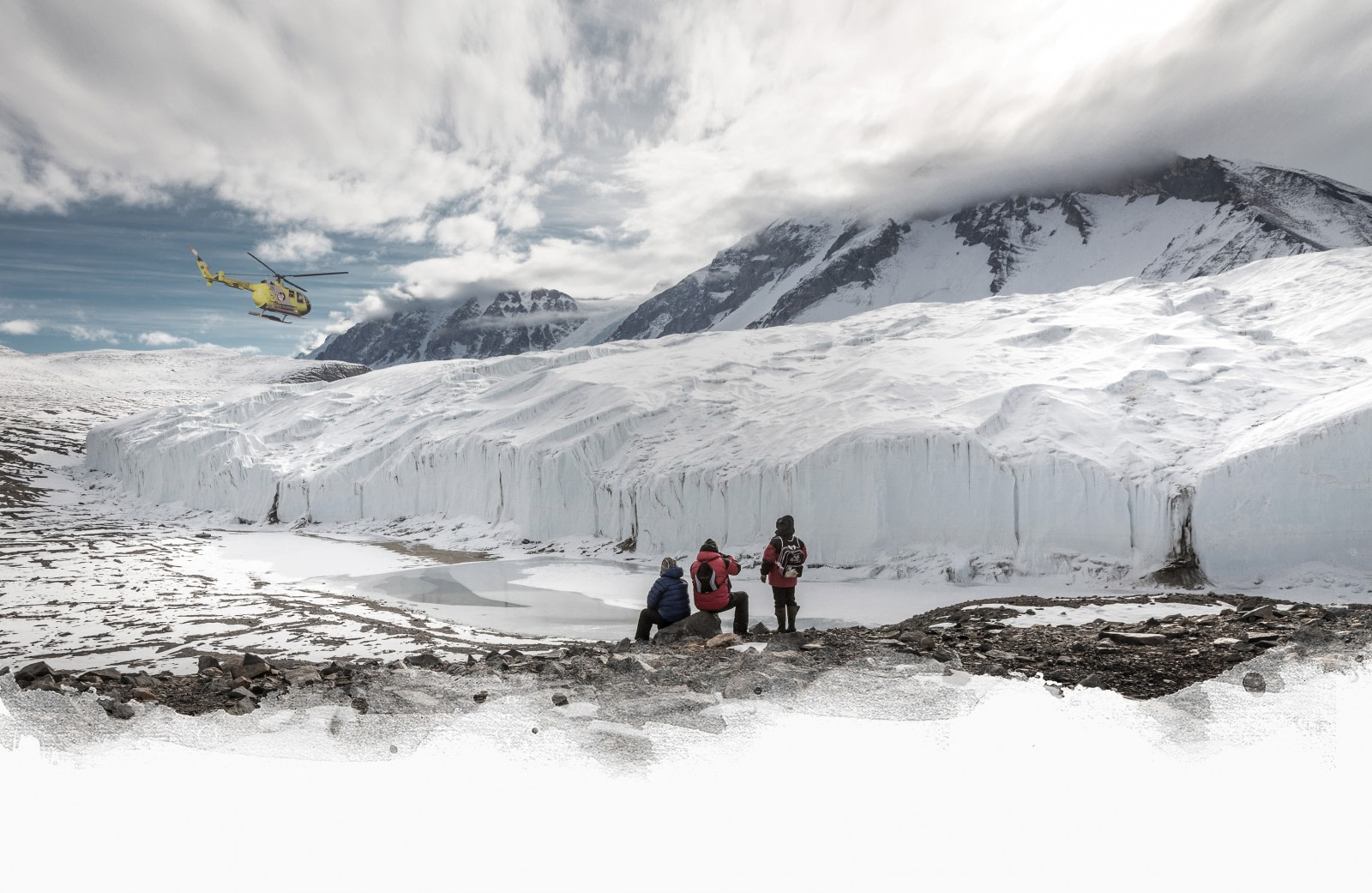
Currently we do not have any Ross Sea cruises available.
Video of ross sea expedition, latest blog and customer story.
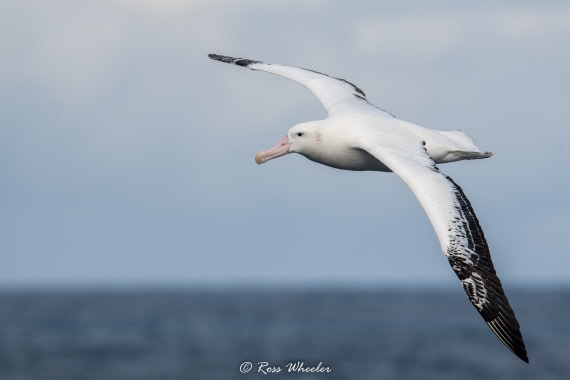
The Eight Albatrosses of Antarctica and the Sub-Antarctic
Whether you’re bound for Antarctica, the sub-Antarctic, or some combination of both, this entry will give you all the important albatross info as well as where these birds can best be found.
Read more All posts
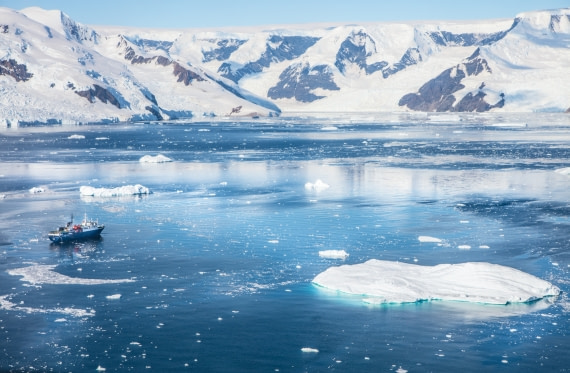
Explorers in the Ice - Ross Sea Antarctica
Although I’ve been to the Peninsula many times, the opportunity to experience the Ross Sea and its historical sites for the first time was very exciting.
Read more Share a story
Latest highlight and wildlife
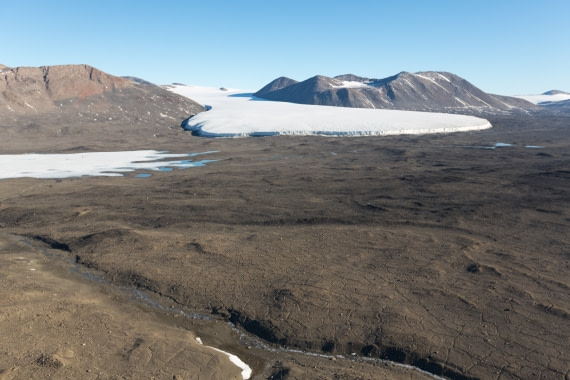
See the highlights you may experience:
- — McMurdo Dry Valleys
- — Zodiac Cruising & Shore Program
- — Ross Sea Helicopter Flights
- — Walk on the Ross Sea pack ice
More highlights
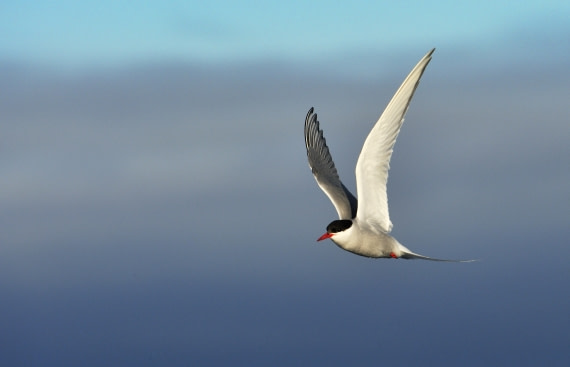
- — Arctic Tern
- — Crabeater Seal
- — Emperor Penguin
- — Adelie Penguin
More wildlife
Ross Sea photo
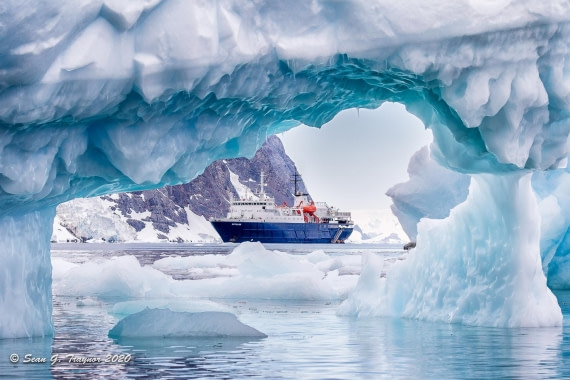
Ross Sea cruise reviews
Super once in a life time experience.
Incredible Oceanwide
Breathtaking trip!
great once in a lifetime experience
Memorable ross sea expedition.
Ross Sea FAQ
What is the ross sea voyage like.
The Ross Sea in Antarctica is one of the most remote places on Earth. Due to heavy pack-ice cover for the biggest part of the year it is off the beaten tourist track of Antarctica. Only the strongest ice-strengthened ships are able to penetrate this high-Antarctic region.
The rewards are obvious; the Ross Sea possesses an abundant Antarctic wildlife, amazing scenery and exceptional artefacts from historic Antarctic expeditions. Some of the highlights are: huge colonies of Emperor and Adélie Penguins, Mount Erebus, the Ross Ice-shelf, the Dry Valleys, McMurdo Station, Cape Evans (hut of Scott) and Cape Royds (hut of Shackleton).
What is the weather at Ross Sea like?
As the Ross Sea is under the direct influence of the harsh Antarctic continental climate, temperatures are on the average low, around 1ºC (34ºF). In February – March, at the end of the Austral summer, temperatures can even drop slightly below zero. Strong katabatic winds can occur at any time though and may have an influence on the programme.
Please note: pack-ice is formed in the Ross Sea early in the winter season and can stay there until late summer. Although we do expect to be able to penetrate into the Ross Sea, nature does not give us a guarantee. Pack-ice is unpredictable and may prevent our ships from completing the planned itinerary.
What to wear at the Ross Sea trip?
As it can be cold in the Ross Sea warm clothing is essential. Waterproof trousers and jacket against wind, rain and salt spray coming into the zodiac. Furthermore thermal underwear, fleece jackets, warm gloves and a warm hat are essential. Rubber-boots for the landings are also needed but are provided on board.
How do I get ashore at the Ross Sea?
There are no harbours in the Ross Sea. Landings are carried out by zodiac and helicopter.
Where is the Ross Sea Located and how big is it?
The Ross Sea is located between the Marie Bryd Land and Victoria Land in the Southern Ocean. This deep bay is part of the Antarctica region, and it is near the Amundsen Sea. During an expedition cruise to the Ross Sea, you will see several islands and land masses. New Zealand has placed a claim on all of this land. However, most of the non-Commonwealth nations do not recognize New Zealand’s claim to any of the land formations within the Ross Sea. The Ross Sea is relatively shallow, and it accounts for up an area that is approximately 960,000 square km (370,000 square miles). In many areas, the Ross Sea does not extend down more than 300 meters (985 feet) to the sea floor, but the southwestern section reaches a depth of 914 meters (3,000 feet). New Zealand has placed a claim on all of this land. However, most of the non-Commonwealth nations do not recognize New Zealand’s claim to any of the land formations within the Ross Sea.
Who discovered the Ross Sea?
Captain James Clark Ross commanded the first two ships (HMS Erebus and HMS Terror) to enter the frigid waters of the Ross Sea. Though he did not succeed in his mission to reach the magnetic South Pole during this 1839 - 1843 expedition, he did chart the Ross Sea and discover the Ross Ice Shelf. You can see both of these amazing Antarctic attractions on our Ross Sea cruises, which include the use of helicopters.
Photo gallery
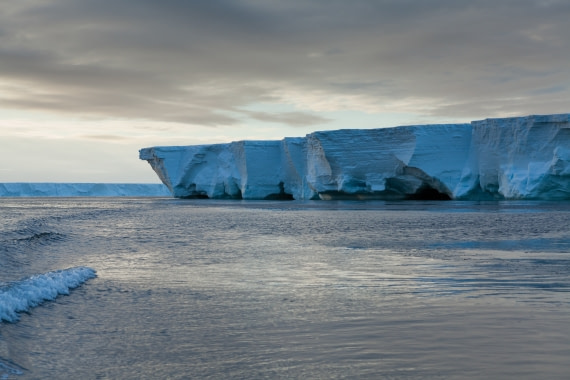
63 photos of the Ross Sea in the gallery »
Ross Sea weather
While temperatures during the Antarctic winter months can drop as low as around -50°C, you can expect slightly more comfortable temperatures around -10°C - 0°C during your Ross Sea cruise.
If you’re wondering what clothing to bring, don’t worry, we have you covered. Follow this link and scroll about one third of the way down the page to get all sorts of clothing guidelines and tips.
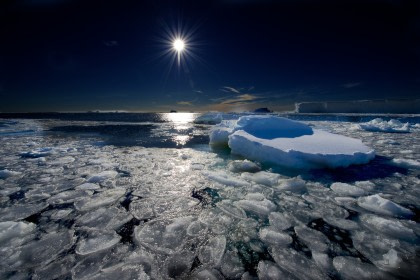
Facts about the Ross Sea
- A colossal squid measuring longer than 10 metres and weighing almost 500 kilograms was found in the Ross Sea in 2007.
- All the islands found within the limits of the Ross Sea have been claimed by New Zealand, although most countries don’t bother to recognise the claims.
- The Ross Ice Shelf is the largest such shelf on Earth. At approximately 472,000 km 2 it is roughly the size of Spain. It soars anywhere between 15 and 60 metres high and extends nearly 800 kilometres along the shoreline.
- The Ross Sea is named after Captain James Clark Ross who mapped the area in the 1841.
- Since the Ross Sea is the open waterway closest to the actual South Pole it has become the launching spot of many exploration expeditions that went on to journey inland.
- The Ross Ice Shelf was the mother to what was quite possibly the biggest iceberg ever. The iceberg broke off of the shelf in the year 2000, measuring 295 km at its longest point and 37 km at its widest. Altogether it boasted a surface area of about 11,000 km 2 .
- Wildlife flourishes despite the harsh cold of the waters. Some of the fish found in the Ross Sea have antifreeze in their veins to keep them from freezing solid.
Travel to the Ross Sea
Travel to the Ross Sea and experience one of the most pristine untouched landscapes left in the world. Your Ross Sea expedition will be full of activities that let you take in the rugged and clean beauty of the area – hike the shores of Antarctica, visiti historical sites from the Golden Age of Exploration like the huts of explorers Shackleton and Scott , and enjoy unique helicopter flights to the Dry Valleys and the Ross Ice Shelf .
Your Ross Sea trip will also introduce you to a surprising abundance of wildlife. Go bird watching on the lookout for albatrosses and Petrels. Cruise along the shores in a Zodiac and say hello to seals and a variety of whales. Your Ross Sea holiday even lets you take helicopter rides to gain the maximum of everything in this spectacular place.
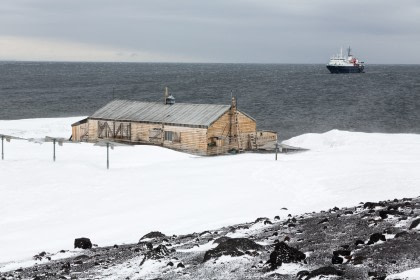
Antarctica and Subantarctic Cruises on SALE
Suite deals - antarctica suites on sale, save up to 20% on antarctic voyages.
Discover the spectacular wildlife havens of Australia's Macquarie Island and New Zealand's Subantarctic Islands and follow in the footsteps of heroic explorers into the heart of Antarctica's Ross Sea with small ship expedition cruise pioneers Heritage Expeditions - as featured on television's Go Further South and Antarctica from Above documentaries.
SAVE 20%* on Heritage Suites and SAVE 15%* on Worsley Suites on our 2025 In the Wake of Scott & Shackleton Ross Sea voyages into the heart of Antarctica.
Enjoy all-inclusive travel aboard our luxurious 140-guest flagship Heritage Adventurer where sophisticated accommodation and gourmet fare meets carefully crafted and unique itineraries, while a fleet of 14 Zodiacs means there's a seat for every guest on every excursion.
*T&Cs apply, new bookings only, excludes landing fees, 2025 departures only when booked by 31 May 2024.
Antarctica photo & video gallery, about heritage expeditions, ambassadors for conservation, pioneers of discovery, and leaders in expedition travel to the world’s best-kept secrets..
For over 35 years, Heritage Expeditions has pioneered voyages to some of the most wild and biologically rich regions on the planet. Our mission is to increase awareness and conservation of the natural world through responsible expedition travel.
Expert Team
Our team of naturalists, historians, biologists and ornithologists bring an enormous wealth of experience, knowledge and passion to our expeditions, both in the field and onboard our ship during our lecture series.
Our new flagship, the 140-guest Heritage Adventurer, combines the highest passenger ship iceclass rating with an international flair and luxury amenities. Guests enjoy spacious suites, elegant common areas and cuisine prepared by top chefs.
Heritage Adventurer
Heritage Adventurer, formerly known as MS Hanseatic , is a true pioneering expedition vessel of exceptional pedigree. Originally designed for 184 guests, Heritage Adventurer now welcomes just 140 travellers ensuring spacious, stylish and comfortable voyages, and with a fleet of 14 Zodiacs to maximise the adventure. Savor daily international gourmet cuisine from talented chefs across two lavish restaurants, and settle into spacious and well-appointed accommodations each night. Enjoy 360-degree views and comfortable sun loungers on the Observation Deck, relax in the Observation Lounge with library, bar and panoramic views, and reinvigorate in the heated salt water pool, well-equipped gym, hot tub, sauna and steam room.
Technical Specs
Year Built: 1991
Shipyard: Rauma, Finland
Classification: Lloyds 1AS, GL E4
Accommodation: 140 guests
Length: 124 metres
Cruising Speed: 12 knots
Zodiacs: 14
Antarctica & Subantarctic Seasons 2024-2025
Join us on a bucket list adventure, in the wake of scott & shackleton: ross sea antarctica.
28 DAYS 7 Jan – 3 Feb 2025 SAVE UP TO 20%* 2 Feb – 1 Mar 2025 SAVE UP TO 20%* Queenstown-Bluff, New Zealand and return
- Walk in Sir Ernest Shackleton’s footsteps at his hut at Cape Royds
- Venture back in time at Borchgrevink’s Hut at Cape Adare
- Be welcomed ashore at research stations in Terra Nova Bay
- Visit Enderby Island in sea lion breeding season
- See the Royal Penguins on Macquarie Island at their peak
- Emperor Penguins, Royals, Kings, Adelie Penguins, whales, seals...
- Adelie Penguins are flourishing with chicks about to start fledging
- Catch the peak flowering of the Megaherbs in the Subantarctic
- 24-hour sunlight in the Ross Sea
- Orca feeding amongst the ice, especially in McMurdo Sound
- Navigate through pack ice that guards the entrance to the Ross Sea
SUITE DEALS! Save 20% on Heritage Suites and 15% on Worsley Suites in 2025!* *T&Cs apply, new bookings only, excludes landing fees, 2025 departures only when booked by 31 May 2024.
Get the Brochure
Galapagos of the Southern Ocean: New Zealand and Australia's Subantarctic Islands
18 – 29 Dec 2024 Queenstown-Bluff, New Zealand and return
22 Nov – 4 Dec 2024 Hobart, Australia to Bluff-Queenstown, New Zealand
Aboard Heritage Adventurer
Visit remote World Heritage Sites: The Snares, Auckland Islands, Macquarie Island and Campbell Island
- Explore Macquarie Island with Park Ranger guides
- Observe the raucous antics of Macquarie Island's Royal Penguin and King Penguin colonies
- Watch lumbering Elephant Seals challenging each other on Macquarie Island
- Zodiac cruise Lusitania Bay - one of the largest penguin breeding colonies on the planet (Macquarie Island)
- Spend the day hiking the unforgettable landscapes of Enderby and Campbell Islands
- Look for the elusive Campbell and Auckland Island Snipe
- Wade waist deep through fields of flowering megaherbs
- Experience the rarely-seen early Albatross courting ritual known as gamming
- Explore wildlife-rich rugged coastlines
- Human history - Coastwatcher's Huts, early settlements and shipwreck tales
Beyond Fiordland: New Zealand's Wildest Islands
12 DAYS SAVE 15%* 28 Dec 2024 – 8 Jan 202 5
Aboard Heritage Adventurer Queenstown-Bluff, New Zealand and Return
- Visit remote World Heritage Sites: The Snares, Auckland Islands and Campbell Island, and explore Stewart and Ulva Islands, Fiordland (Doubtful Sound, Dusky Sound and Acheron Passage, Astronomer’s Point and Pickersgill Harbour)
- Discover the primordial majesty and unspoiled beauty of Fiordland
- Explore sea caves and observe wildlife in spectacular numbers
- Zodiac cruise glittering waterways between podocarp forests looking penguins and dolphins
- Visit some of New Zealand's most remote and iconic locations, many only accessible by expedition ship
*T&Cs apply, subject availalbility, when booked by 31 May 2024, cannot be used in conjunction with any other promotion
Indonesian explorer: raja ampat to papua new guinea.
19 DAYS 13 – 31 Oct 2024
Bali, Indonesia to Port Moresby, Papua New Guinea + FREE FLIGHT TO CAIRNS* Aboard Heritage Adventurer
- Enjoy the unforgettable of swimming with the gentle Whale Sharks of Cenderawasih Bay
- Visit Komodo National Park - land of the Komodo Dragon
- Discover Jacques Cousteau's "underwater nirvana" Wakatobi National Park
- Explore the forgotten tropical paradise of Raja Ampat
- Snorkel pristine coral gardens looking for Dugong, Parrotfish, Clownfish, Manta Rays and Pygmy seahorses
- Discover ancient rock in hidden caves on rarely visited islands
- Brilliant birding with up to 14 species of Bird-of-paradise including Red Bird-of-paradise, Wilson's Bird-of-paradise, Magnificent Bird-of-paradise and Lesser Bird-of-paradise
- Swim with thousands of stingless jellyfish of and explore Tomolol Caves
- Trek in to the lush rolling hills and tropical rainforest of the Arfak Mountains
- Thrilling culture encounters at villages largely cut off from the outside world
- Discover WWII relics and snorkel Japanese war plane wrecks
Discover the Secrets of Melanesia: Exploring Papua New Guinea, The Solomon Islands and Vanuatu
17 DAYS 30 Oct – 15 Nov 2024
Port Moresby, Papua New Guinea to Port Vila, Vanuatu + FREE FLIGHT CAIRNS TO PORT MORESBY* Aboard Heritage Adventurer
- Discover the hidden gems of Papua New Guinea, the Solomon Islands and Vanuatu
- Travel up the Sepik River, home to traditional artists
- Be some of the first travellers in over two decades to return to the spectacular island of Bougainville
- Superb snorkeling in crystalline waters
- Mangrove Zodiac cruise in search of Dugong and crocodiles
- Meet friendly local villagers – remarkable and diverse cultural visits from island to island
- A Naturalist and Marine Biologist will also be on this expedition
- Exeptional birding including Manus Friarbird, Mussau Monarch, Superb Pitta, Roviana Rail, Solomon Sea Eagle, Beck's Petrel, Vanikoro White-eye, Kolombangara Monarch, Vanuatu Megapode and White-headed Fruit Dove
- Visit isolated Ambrym - ‘island of volcanoes' and home to traditional Rom dance
- Swimming at iconic Champagne Beach
Birding Down Under: Subantarctic and Chatham Islands
3 – 19 Dec 2024 Aboard Heritage Adventurer Queenstown-Bluff, New Zealand and return
- Island Groups: Snares, Bounty Islands, Antipodes Islands, Auckland Islands, Campbell Island, Macquarie Island & Chatham Islands
- Incredibly rare Chatham Island Black Robin and Taiko (Magenta Petrel), and Forbe's/Chatham Parakeet
- Visit the only breeding sites of the Erect-crested Penguin and home to the world's rarest shag the endemic Bounty Island Shag in Antipodes and Bounty Islands
- Pyramid Rock, the only breeding place of the Chatham Island Albatross
- Cross the Chathams Rise, known location of Wandering Royal and Salvin's Albatross, and Cape, Westland Black and Cook's Petrel
Forgotten Islands of the South Pacific: Subantarctic Islands
28 Dec 2024 – 4 Jan 2025
Aboard Heritage Adventurer Queenstown-Bluff, New Zealand and return
- Island Groups: Snares, Aucklands, Campbell
- Watch Yellow-eyed Penguins make their way to and from the sea to feed hungry chicks
- Hiking on Enderby Island
- Carpets of flowering endemic daisys on Campbell Island
- Southern Elephant Seals haul out on Northwest Bay, Campbell
- Observe nesting Southern Royal and Light-mantled Sooty Albatross, and numerous endemic birds
- Rare Hooker’s or New Zealand Sea Lions and their pups on Enderby Island
- Human history - Coastwatcher’s Huts, early settlements and shipwreck tales
- Flowering Rata Forests, rolling hills of flowering megaherbs, large tree daisies
- Options to climb spectacular Mt Honey or hike Col Lyall Saddle
- Look for the elusive Subantarctic Snipe on Auckland and Campbell Islands
Unseen Fiordland, Stewart Island and The Snares: Exploring New Zealand's Remote Backyard
Choose your adventure, select your voyage(s) to receive the e-brochure, heritage expeditions.
Spanning two hemispheres — Antarctica’s Ross Sea and the Subantarctic Islands , New Zealand , Australia's Kimberley coast , Vanuatu , Solomon Islands , Papua New Guinea , Indonesia , Philippines , South Korea and Japan — we journey to UNESCO World Heritage sites, pristine nature reserves, and far-flung indigenous communities steeped in tradition.
- DESTINATIONS
- CAPTAIN’S LOG

- NEW ZEALAND
- SOUTH PACIFIC
- SUBANTARCTIC ISLANDS
- Testimonials
- Responsible Travel
- Expedition Calendar
- Trip Reports
Covid outbreak at Antarctic research station forces temporary travel ban
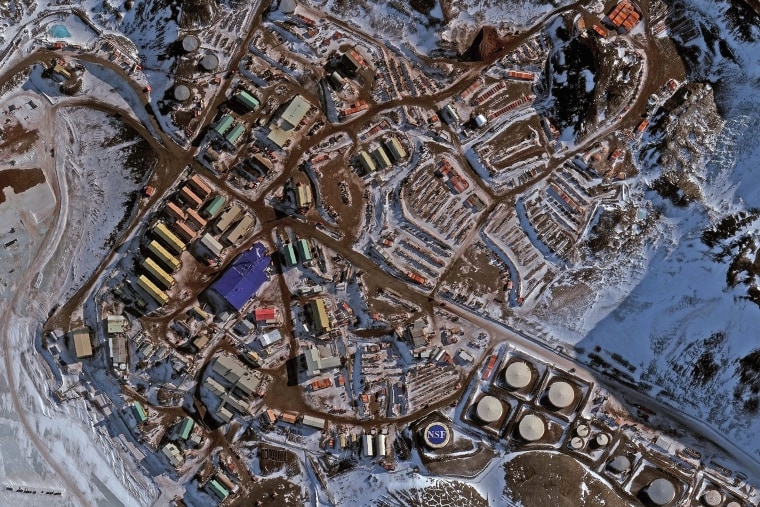
A Covid outbreak at an American scientific research station in Antarctica has forced U.S. officials to temporarily halt all travel to the remote outpost.
The National Science Foundation, which operates McMurdo Station on the southern tip of Antarctica’s Ross Island, announced new measures over the weekend to help control the outbreak, which was first reported by NBC News on Friday .
“Consistent with the U.S. National Science Foundation’s commitment to balance research and operational needs while containing the spread of Covid cases in Antarctica, NSF is implementing a pause on all travel to the continent for the next two weeks, effective immediately, while we reassess the situation,” agency officials said in a statement released Saturday .
The temporary ban does not include essential travel for health and safety reasons, according to the agency. There is also a medical clinic located at the station to provide health care to its residents.
The agency confirmed that 10% of the research station’s population have tested positive for Covid during this recent outbreak. There are 885 people currently living and working at McMurdo Station.
The agency said it “highly recommends” KN-95 masks be worn at all times and will provide them to residents.
Though the station operates year-round, many scientists typically travel to McMurdo in November for field research during Antarctica’s summer season. It’s not yet clear what, if any, impact the outbreak could have on research and operations at the outpost.
Though most of the stricter Covid protocols from the past two years — including quarantines, charter flights and multiple PCR tests — have been relaxed, visitors to McMurdo must receive a bivalent booster shot and those who are at high risk for Covid are screened out.
Denise Chow is a reporter for NBC News Science focused on general science and climate change.

Frosty Fortune: Active Volcano in Antarctica Spewing Gold
I n the realm of Antarctica, amidst its icy expanse, there exists a phenomenon similar to a fantastical tale — a cascade of gold descending from the heavens.
Nestled among the glaciers lies Mount Erebus, a fiery sentinel and the southernmost active volcano on Earth.
A study conducted in 2017 unveiled the presence of 138 volcanoes dotting this frozen continent, with approximately nine among them marked as active. Towering at a summit elevation of 12,448 feet, Mount Erebus reigns as the most prominent among them.
Part of the three volcanoes forming Ross Island, Erebus earned its name from its fiery temperament, believed to be in the throes of eruption when first sighted in 1841 during Captain James Clark Ross's pioneering expedition, UPI reported.
Ross, renowned for his magnetic surveys in both Arctic and Antarctic realms, christened the Ross Sea and unveiled the Victoria Land region. The vessel 'HMS Erebus' was a notable companion on his exploratory journey.
Even in modern times, scientists maintain a vigilant watch over the volcano through the Mount Erebus Volcano Observatory, engaging in field expeditions to uncover extremophilic life forms.
Notably, the largest Antarctic settlement, McMurdo Station, administered by the United States, lies approximately 25 miles south of Mount Erebus, offering a unique vantage point to observe its fiery displays.
Satellite imagery of Erebus reveals a persistent lava lake, its fiery cauldron bubbling since at least 1972, as reported by IFL Science.
Never miss a story — sign up for the Front Page Detectives newsletter. Be on the scene the moment news breaks.
The volcano sporadically emits plumes of gas and steam, occasionally launching boulders of semi-molten rock known as "volcanic bombs" into the air.
While the spectacle of volcanic bombs is captivating, it is the unexpected phenomenon of gas eruptions dispersing minuscule metallic gold crystals that perplex scientists. Estimates suggest that Mount Erebus expels approximately 80 grams of gold per day — a fortune amounting to roughly $6,000.
Remarkably, traces of this gold dust have been detected hundreds of miles away from Mount Erebus, suspended in the ambient air by Antarctic researchers as far as 621 miles from the volcano's epicenter.

Elgin Courier-News | Food that helps feed more than 1,000 at…
Share this:.
- Click to share on Facebook (Opens in new window)
- Click to share on X (Opens in new window)
- Click to print (Opens in new window)
- Click to email a link to a friend (Opens in new window)

- Elgin Courier-News Opinion
- Elgin Courier-News Sports
- All Suburbs
Elgin Courier-News
Elgin courier-news | food that helps feed more than 1,000 at antarctic research bases for a year procured by elgin company.

Food for two of the three U.S. research bases located in the frozen tundra of Antarctica is procured by Elgin-based St. Charles Trading Inc., which obtains enough to feed more than 1,000 for a year, according to Vanessa Baker, the company’s marketing director.
“McMurdo Station peaks out at around 1,000 people who rotate in and out and go into the field on different science projects or support the other stations,” Baker said. “The South Pole Station maxes out at about 150 people.”
The items the company secures come from a variety of suppliers, including ADM, Cargill, Morton Salt, Riviana Rice and Kraft, she said. The items are shipped to Kaiyuh Services in California, which transports it all to one of the most remote and coldest places on earth.
St. Charles Trading has been working with Kaiyuh on the Antarctica project since 2020. All told, the effort involves ordering and transporting four metric tons of food, Baker said.
While fresh food is delivered a number of times during Antarctica’s summer — winter in the Northern Hemisphere — most things they need are obtained by the Elgin company, which was founded in 1984 and employs about 100 people.

For example, they can’t get fresh milk delivered so St. Charles Trading sends a year’s supply of powdered milk via Kaiyuh Services, Baker said.
Forecasting and planning for the food order is being done now. In May, a draft order will be sent to Kaiyuh Services.
“We have 12 weeks to bring the order into our warehouse in California,” Kaiyuh project manager Brian Eisenstatt said in a news release on the massive effort. “Once it’s all brought in, that’s when we start packing.”
Packing takes from mid-September until Thanksgiving. Goods are put into specialized food containers that are transported to Port Hueneme in California, where they are loaded onto a resupply vessel en route to New Zealand, Eisenstatt said in the release.
In New Zealand, the ship picks up a few more things before heading to Antarctica. The food should arrive at McMurdo Station on Ross Island by mid-February, where it will be warehoused. The order being readied now will be consumed from October 2024 through February-March 2025.
The items and ingredients provided by St. Charles Trading might not be eaten until 2025. All of the food from the Elgin company can be frozen, an important consideration as it’s going to be stored in a non-temperature-controlled warehouse.
“Over the winter in Antarctica, the food goes into a deep freeze and over the summer, when the sun beats down on the roof of the warehouse containing food that isn’t temperature-sensitive, it can get up into the 50s and 60s,” Eisenstatt said.
For every single researcher working in Antarctica, there are four to five support staff who are responsible for such things as cooking, cleaning, maintaining vehicles and fueling the station, he said.
“There’s so much involved in keeping that place running,” Eisenstatt said. “It is so remote. They must be very self-sustaining.”
Mike Danahey is a freelance reporter for The Courier-News.
More in Elgin Courier-News

Engineering firm says Kane County should plan to consolidate onto single campus, with Aurora and Elgin satellite offices

Elgin Courier-News | Elgin man charged with attempted murder in connection with residential shooting

Elgin Courier-News | Elgin News Digest: School District U-46 awards Superintendent’s Scholarships to 30 students; Diapers and Wipes Drive being held in Elgin through month of May; model railroad exhibit at Gail Borden Public Library this weekend

Daily Southtown Sports | Baseball and local scores for the Southland, Aurora, Elgin, Naperville and Lake County
Trending nationally.
- “A big deal”: What the feds’ move to reclassify marijuana means for Colorado cannabis
- Private boarding school to receive $100 million gift. It’s one of the largest ever made
- Disneyland fight involving stroller-pushing mom leads to ejection
- WBZ NewsRadio reporter is let go after 26 years with Boston station: ‘Quite the shock’
- H-1B visa: Feds say they fixed loophole that opened way for massive fraud

IMAGES
VIDEO
COMMENTS
Cruise to the very heart of Antarctica - gateway to the South Pole and guardian of some of the richest Antarctic treasures. These Ross Sea cruises include visits to the four huts of the historic period - those of Borchgrevink, Scott and Shackleton - plus the American, New Zealand and Italian scientific bases. Some great wildlife, including good opportunities for Emperor Penguins.
Ross Sea in Luxury. Travelling onboard a modern 5* expedition ship for only 21 days, this trip makes Antarctica's remote Ross Sea so much more accessible. While the vessel's all-inclusive creature comforts and speed make sailing days pass by comfortably, the remoteness, wildlife and…. 21 Days. $23,990.
Ross Island. Home to three historic expedition huts, Antarctica's largest research station, and Earth's southernmost active volcano, Ross Island is a longstanding favorite of our far-south expeditions
Geography - map skills. An entirely volcanic island in the Ross Sea off the coast of Antarctica in McMurdo Sound at 77°30'S 168°00'E, Ross Island is made up of four volcanoes including Mount Erebus, the worlds most southerly active volcano 3,794m (12,448ft) high and one of a very few worldwide with a permanent lava lake in the crater. Ross ...
Discovered in 1841 by James Ross, Ross Island was actually named in honour of him by Robert Scott later on. Home to 3 inactive volcanoes as well as the active Mount Erebus, the second highest volcano in Antarctica, Ross Island has been used as a base for many early expeditions to the South Pole and is still the southernmost island reachable via the Ross Sea.
Includes privileged visits to Scott's and Shackleton's historic huts and research bases on Ross Island with stops en route at the Subantarctic Islands. Send me details. Trip type. Ross Sea. Trip length. 28 Days. From. $31,500 - $63,000. Ship Comfort.
McMurdo Station size and population. Built in 1955, McMurdo Station is the largest scientific research facility in Antarctica. It can support more than 1,200 people during the Southern Hemisphere summer, but in winter that population goes down to about 200 people. The size of McMurdo Station can make it feel more like a village than a base.
Orthographic projection centered over Ross Island. Ross Island) is an island in Antarctica lying on the east side of McMurdo Sound and extending 43 nautical miles (80 km; 49 mi) from Cape Bird on the north to Cape Armitage on the south, and a like distance from Cape Royds on the west to Cape Crozier on the The island is entirely volcanic. Mount Erebus, 3,795 metres (12,451 ft), near the center ...
The Ross Sea is often dubbed the last true pristine marine ecosystem left on earth and, rather conveniently, is the gateway to East Antarctica. The marine-life enrichment of this stretch of Southern Ocean, which extends from Ross Island in the west to the Marie Byrd Land on the east, is what attracts an abundance of unique marine life.
Things to Do in Ross Island. 1. Mount Erebus. 2. Air New Zealand Flight 901 Memorial Cross. Things to Do in Ross Island, Antarctica: See Tripadvisor's traveler reviews and photos of Ross Island tourist attractions. Find what to do today, this weekend, or in April. We have reviews of the best places to see in Ross Island.
On the Inexpressible Island, discover the exceptional survival conditions of a group of six men of the Terra Nova expedition, led by Robert Falcon Scott (1910-1913), forced to winter in a cave dug in the ice, today classified as an Antarctica historical monument. On Ross Island, follow in the footsteps of the polar explorers Sir James Clark ...
Scott Base is the New Zealand Antarctic research facility, located at Pram Point on Ross Island, just on the opposite side of Ob Hill from McMurdo Station. The base houses 85 people during the summer season and a paltry 10-14 in the winter. The cross outside Scott's Hut, Cape Evans. Scott's Hut, left as it was.
A month long expedition to untouched parts of Antarctica. Starting in Invercargill, New Zealand, you head south exploring some of the most rugged and wild landscapes known to exist on the planet. Followed by huge numbers of seabirds, make your way towards the impressive Ross Sea, stopping en-route at the Auckland Islands, Campbell Island and more.
Scenic Eclipse II offers three unforgettable East Antarctic expeditions this 2024-25 cruise season. These are: 25-day ' Mawson's Antarctica: Along the East Coast ' from Queenstown to Hobart, departing December 15, 2024. 24-day ' Antarctica's Ross Sea: Majestic Ice & Wildlife ' from Hobart to Dunedin, departing January 8, 2025.
The Ross Sea region of Antarctica is one of the most remote places on Earth and one of the most fascinating places in the continent's human history. With shipping restricted by impenetrable pack ice to just two brief months each austral summer, few people have ever visited this strange and beautiful territory, with opportunities for non-scientific personnel limited to a handful of tourist ...
That means travel to Antarctica is just around the corner. Many researchers and scientists are anxious for favorable conditions, so they can safely travel to Ross Island. The island is home to two major research facilities, McMurdo Station and Scott Base, operated by the United States and New Zealand, respectively. McMurdo Station is famous for ...
Mount Erebus, Ross Island, Antarctica. Ross Island, volcanic formation in Antarctica, located in the western Ross Sea, Ross Dependency (New Zealand), at the northern margin of the Ross Ice Shelf, just off the coast of Victoria Land. The island is 43 miles (69 km) long and 45 miles wide. On it are Mount Erebus (an active volcano 12,450 feet ...
Ferries depart from Aberdeen Jetty in Port Blair and the ticket for ferry trip can be purchased at the jetty. Visiting Ross island is a day trip from Port Blair and the cost for a ferry return trip is INR 350 per person. The trip can also be extended (INR 850) to visit North Bay Island. Even though the North Bay Island is pretty, I suggest ...
The Ross Sea is located between the Marie Bryd Land and Victoria Land in the Southern Ocean. This deep bay is part of the Antarctica region, and it is near the Amundsen Sea. During an expedition cruise to the Ross Sea, you will see several islands and land masses. New Zealand has placed a claim on all of this land.
Suite Deals - Antarctica Suites on Sale SAVE up to 20% on Antarctic Voyages. Discover the spectacular wildlife havens of Australia's Macquarie Island and New Zealand's Subantarctic Islands and follow in the footsteps of heroic explorers into the heart of Antarctica's Ross Sea with small ship expedition cruise pioneers Heritage Expeditions - as featured on television's Go Further South and ...
Nov. 7, 2022, 9:21 AM PST. By Denise Chow. A Covid outbreak at an American scientific research station in Antarctica has forced U.S. officials to temporarily halt all travel to the remote outpost ...
It turns out that Mount Erebus spews a fortune in gold across Antarctica — $2.1 million worth of it per year, according to reports. ... from Erebus up to 1,000 kilometers across Ross Island. And ...
Antarctica's Ross Island is a landmass formed by four volcanoes located in the Ross Sea. Naturally, it is an amazing area for researchers to explore. And that's exactly what a few scientists did ...
Part of the three volcanoes forming Ross Island, Erebus earned its name from its fiery temperament, believed to be in the throes of eruption when first sighted in 1841 during Captain James Clark ...
Travel; TV and Streaming ... tons of food procured by Elgin-based St. Charles Trading will feed the 1,000 or so people working at McMurdo Station on Ross Island in the Antarctic for more than a ...
An active volcano in Antarctica is shooting $6,000 in gold dust into the air every single day, NASA's Earth Observatory revealed last week. ... Travel. Sports. Search ... This volcano is among Antarctica's 138 active volcanoes. Located on Ross Island in Antarctica, the volcano holds importance due to a tragic event in 1979 when Air New ...
The Magnetism of Antarctica: The Ross expedition 1839-1843 by J. Knight, Whittles Publishing Ltd, 2023, £18.99 (pb) 232 pages, illustrations, ISBN 9781849955010